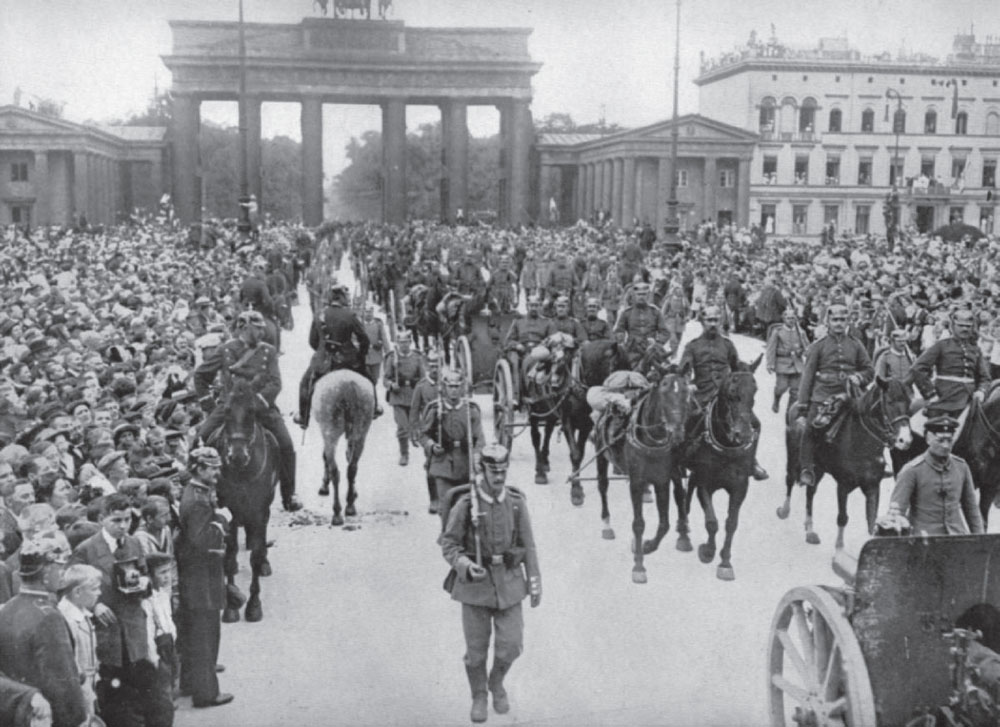
CHAPTER 1
THE ROAD TO YPRES
FROM THE PREFACE TO ‘THE GERMANS AT YPRES’
BY OTTO SCHWINK
There is no more brilliant campaign in history than the advance of our armies against the Western Powers in August and early September 1914. The weak French attacks into Alsace, the short-lived effort to beat back the centre and right wing of our striking-force, the active defence of the Allied hostile armies and the passive resistance of the great Belgian and French fortresses, all failed to stop our triumphal march.
The patriotic devotion and unexampled courage of each individual German soldier, combined with the able leading of his commanders, overcame all opposition and sent home the news of countless German victories. It was not long before the walls and hearts of Paris were trembling, and it seemed as if the conspiracy which half the world had been weaving against us for so many years was to be brought to a rapid conclusion. Then came the Battle of the Marne, in the course of which the centre and right wings of the German Western Army were, it is true, withdrawn, but only to fight again as soon as possible, under more favourable strategic conditions. The enemy, not expecting our withdrawal, only followed slowly, and on 13th September our troops brought him to a standstill along a line extending from the Swiss frontier to the Aisne, north-east of Compiègne. In the trench warfare which now began our pursuers soon discovered that our strength had been by no means broken, or even materially weakened, by the hard fighting.
As early as 5th September, before the Battle of the Marne, the Chief of the German General Staff had ordered the right wing should be reinforced by the newly-formed Seventh Army. It soon became clear to the opposing commanders that any attempt to break through the new German front was doomed to failure, and that a decisive success could only be obtained by making an outflanking movement on a large scale against the German right wing. Thus began what our opponents have called the ‘Race to the Sea,’ in which each party tried to gain a decision by outflanking the other’s western wing.

German army at Brandenburg Gate 1914.
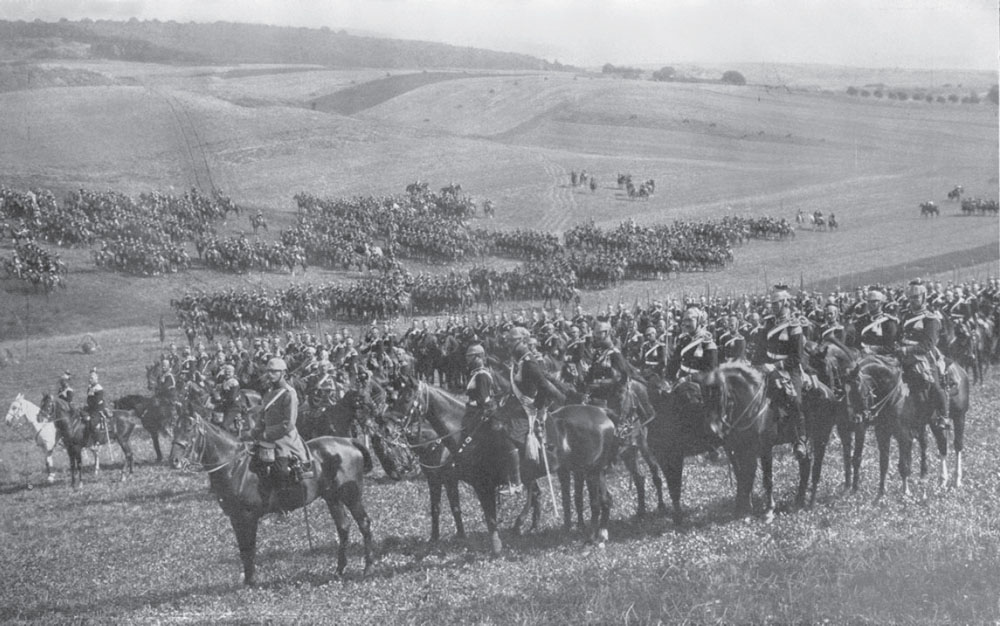
A German cavalry division on manoeuvres
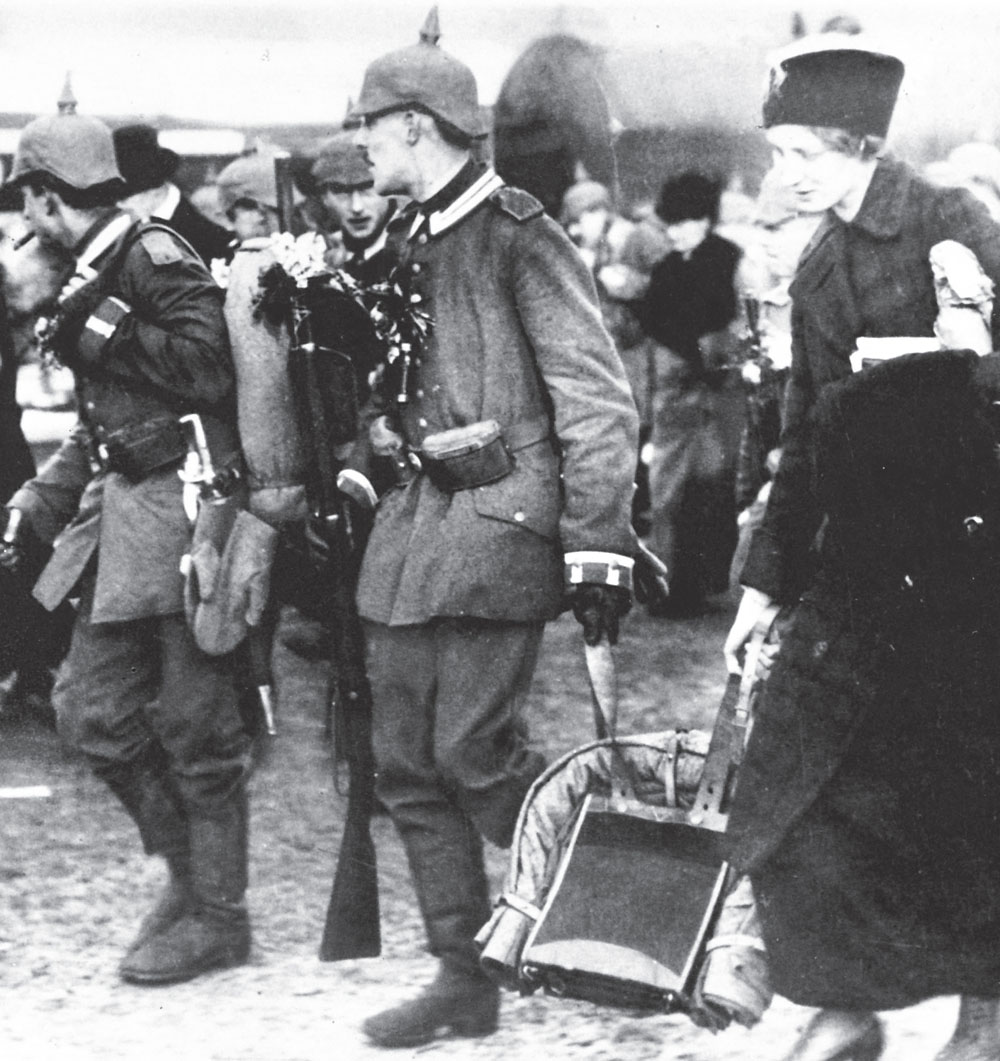
In Germany soldiers were accompanied, amidst scenes of buoyant optimism, on the journey to the train station by their friends and families. This soldier is accompanied by his wife who shares the burden of his heavy field pack.
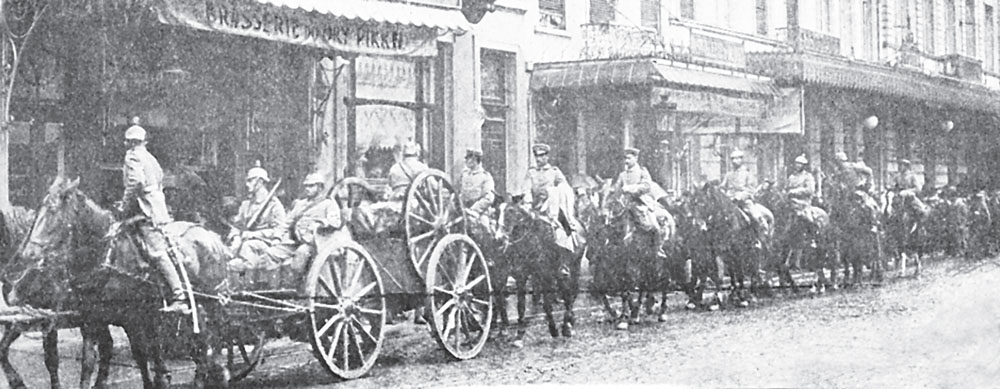
The Kaiser’s strength of arms soon humbled the subjects of King Albert.

The Great War was the first war to encompass radio communication and the widespread use of the telegram system. Here German engineers are improvising a connection.

The rumbling ammunition wagons in the spectacular procession of the Teutonic War Lord passing down the Boulevard Botanique.
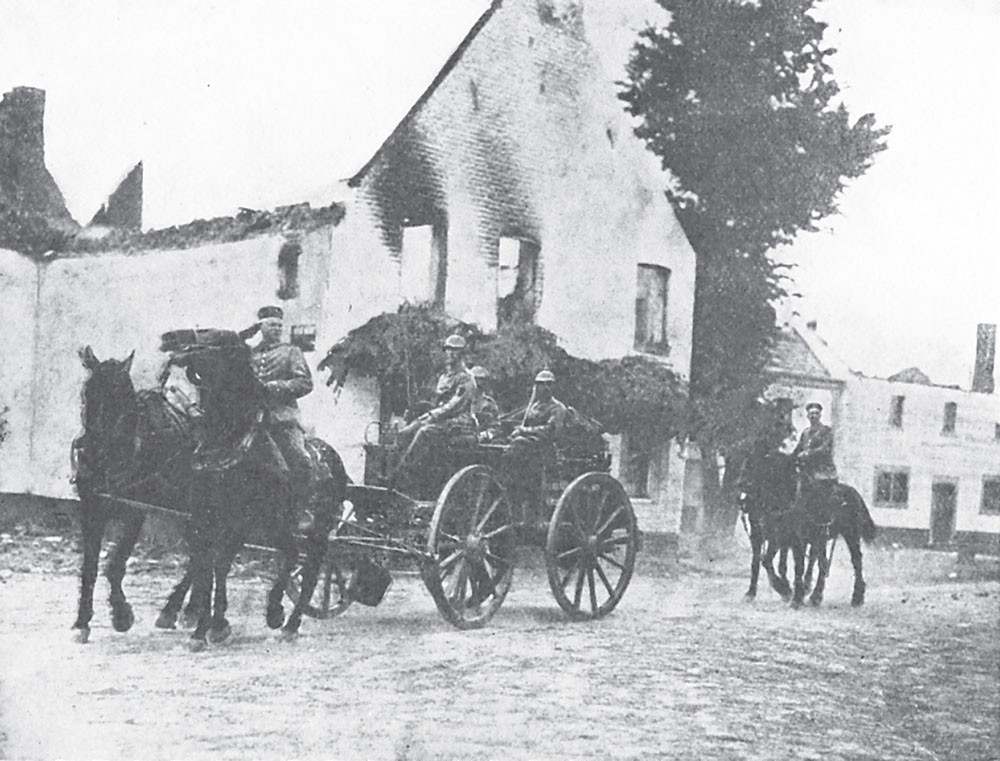
German troops leaving the battle damaged town of Mouland.
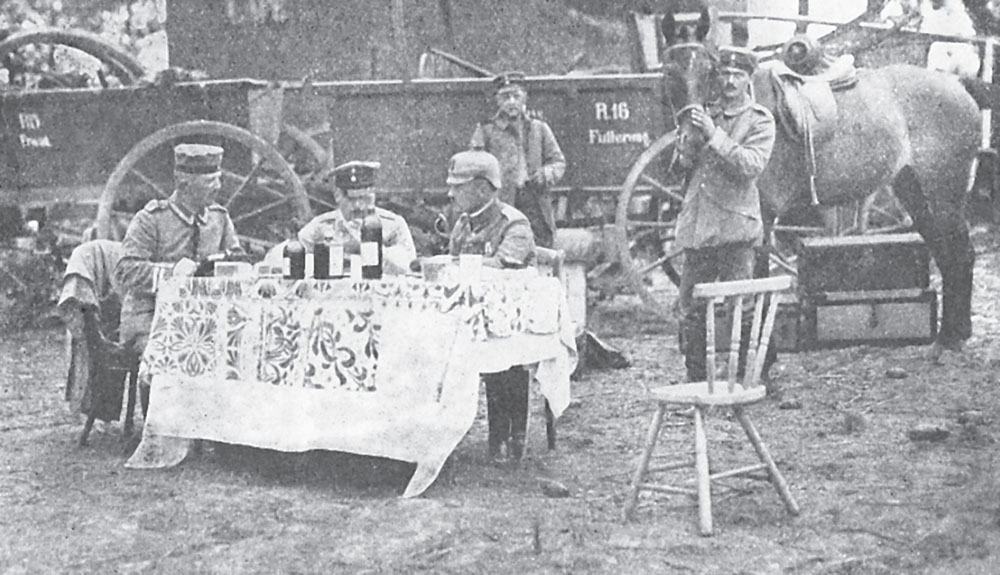
German officers eating looted food in a Belgian town. The surface fineries of such a whimsical scene mask the terrible outrages and murders which were actually committed by the German forces.
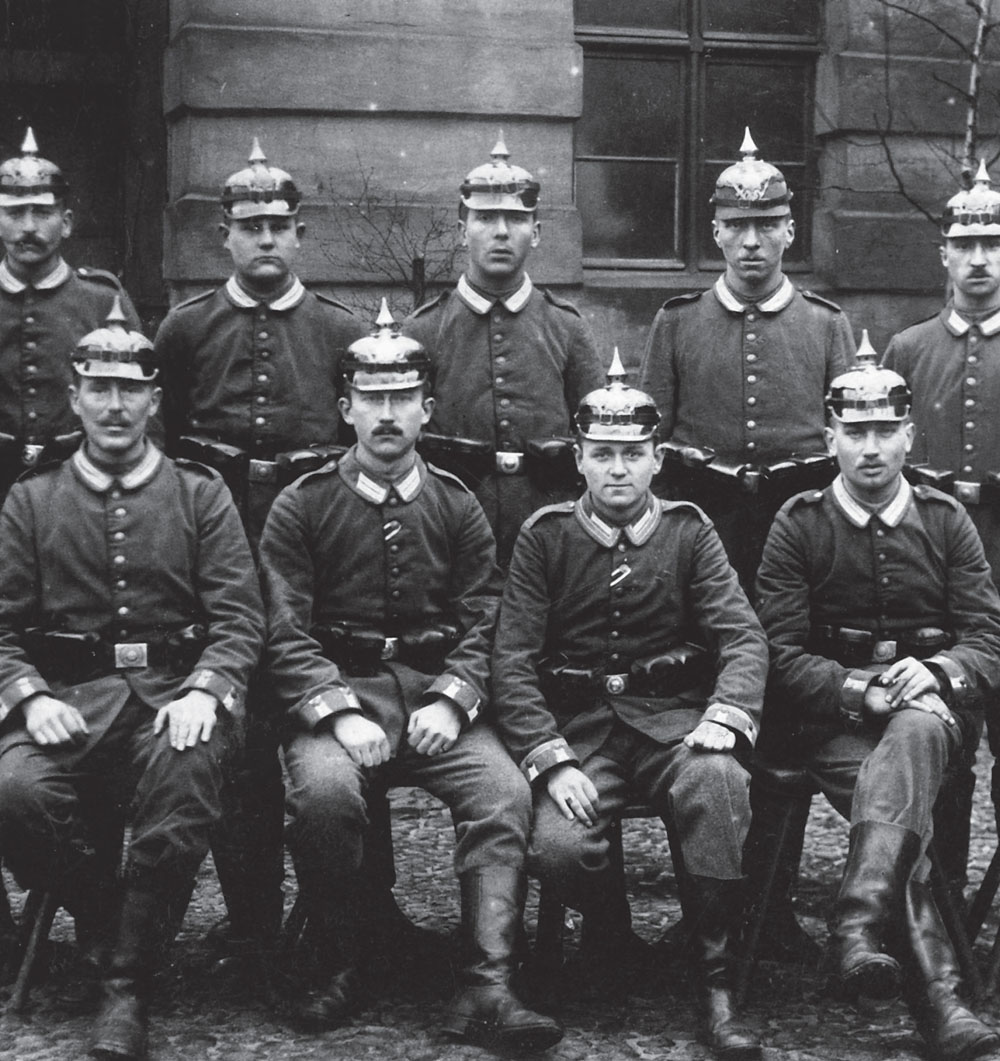
The Imperial German Army of 1914 was comprised of fit, well trained and enthusiastic men who formed the most powerful army on earth.
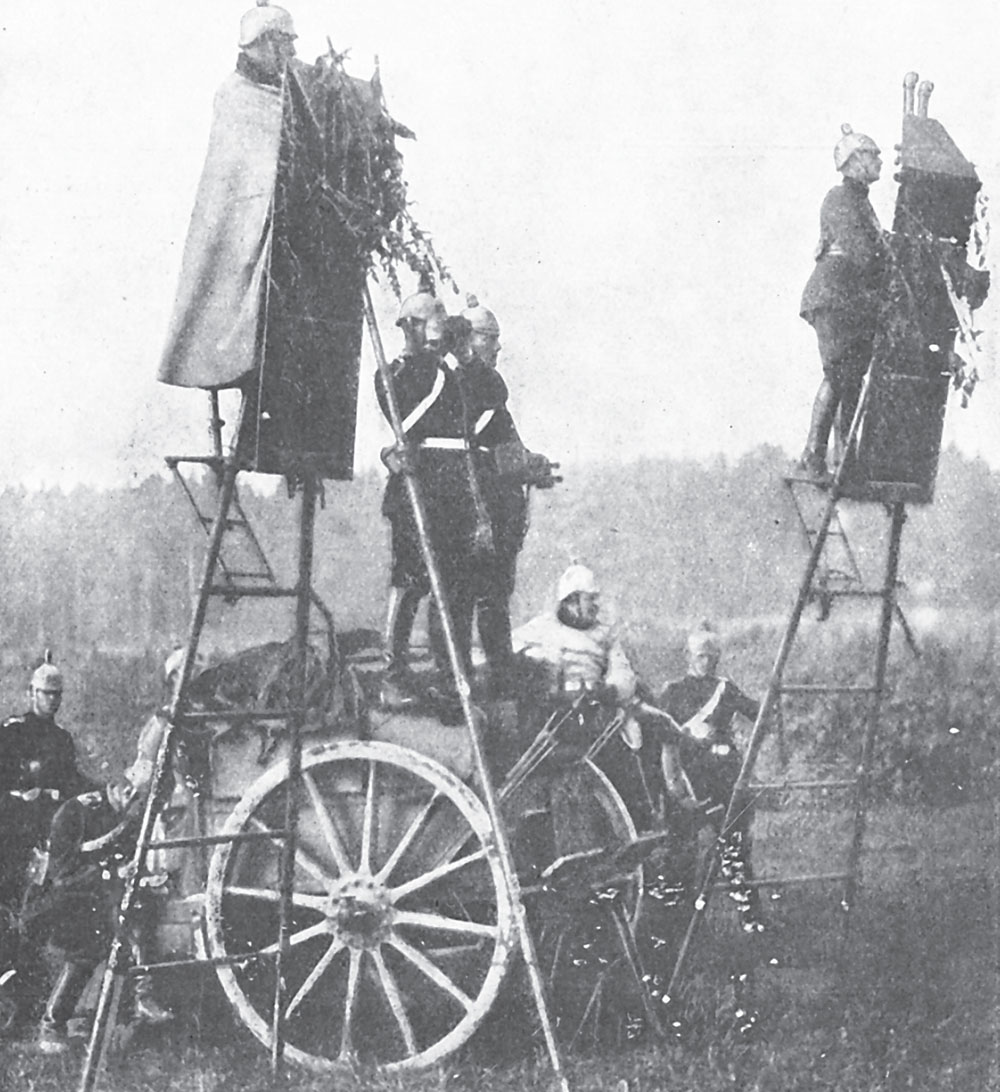
German observation ladders.
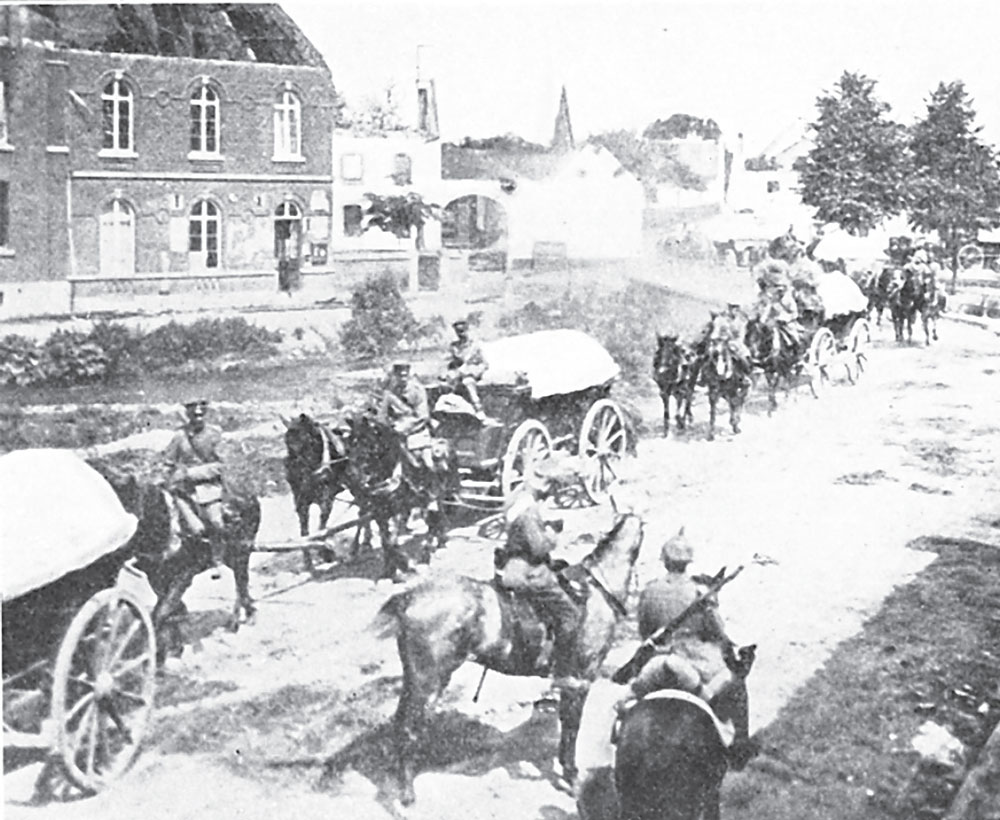
On the German line of communications. German commissariat wagons passing through the ruined village of Vise with munitions for the main German army in Belgium.

German cavalry raiders crossing the Meuse in a canvas boat.
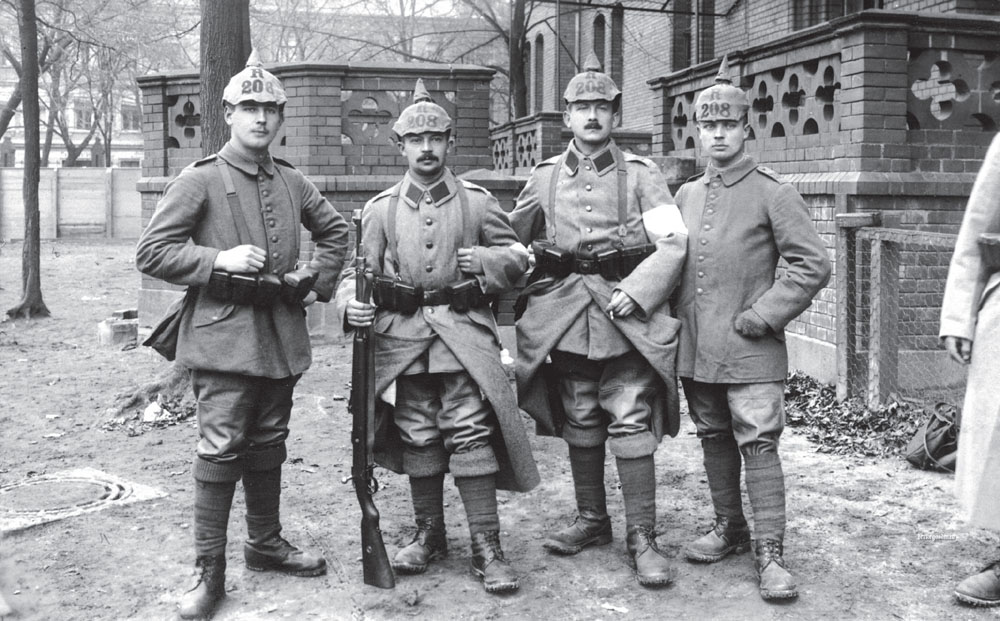
Men of reserve infantry regiment 208.
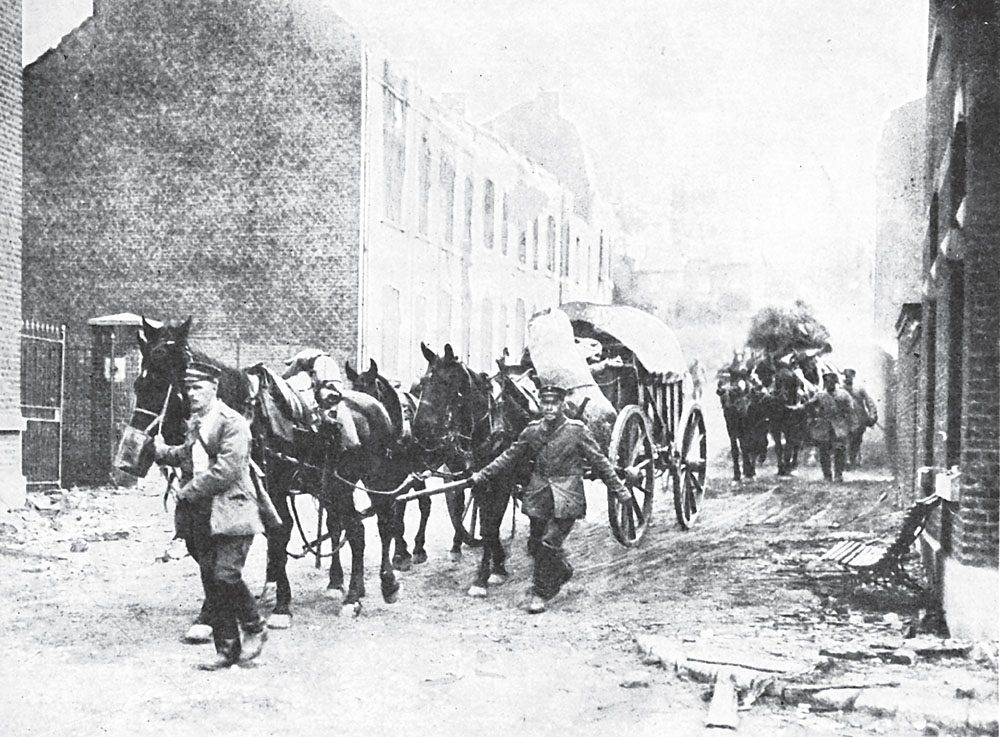
Transports of the invading German army in Belgium. Forage wagons passing through Mouland, a village on the Belgian frontier of Holland north of Visé, and one of the first to be burnt by the invading army from Aix la Chapelle.
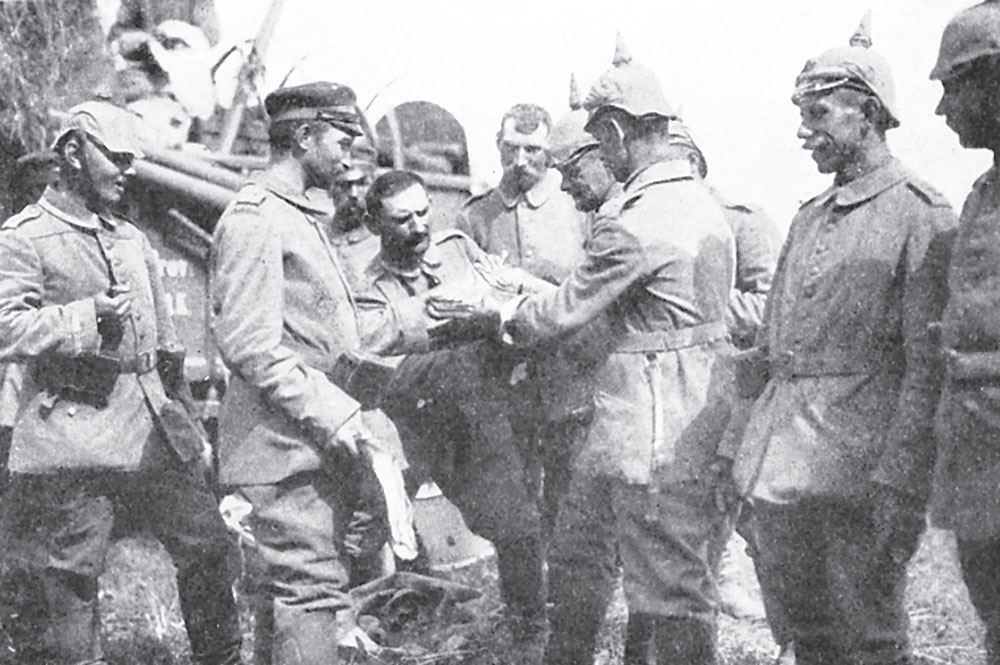
German troops halting on the way to Brussels. Stopping for the midday ration of bread and ham, served out to them from the field transport.
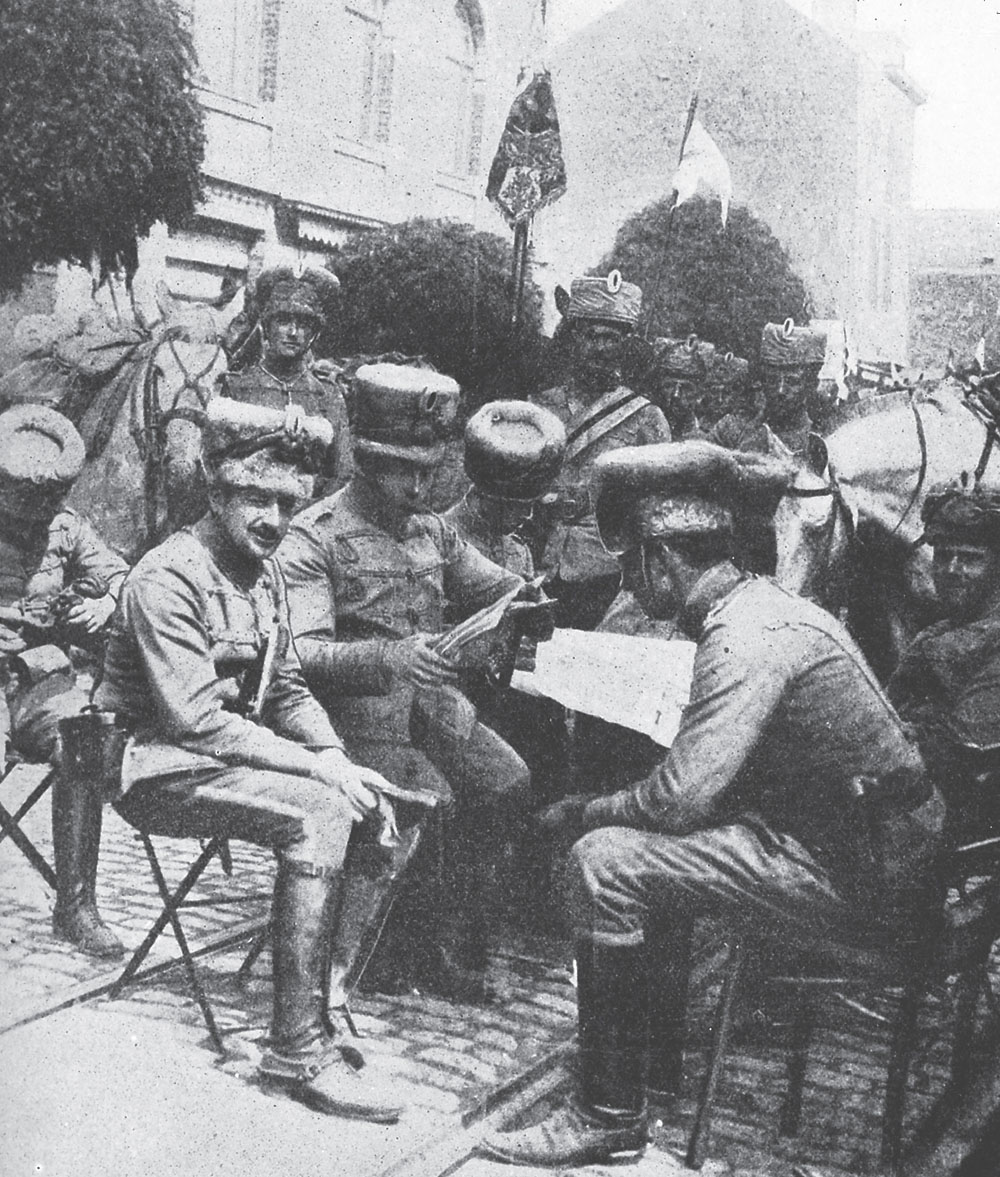
The flower of the German army in the Brussels Parade. The Kaiser’s crack troops were sent to impress the people of Brussels. In this splendid photograph (from a private source in Brussels) a group of Hussar officers is seen in the Chaussée de Louvain studying Belgian papers and enjoying a brief rest before their rush through Belgium to attempt that crushing blow at France which was the keynote of German strategical theory for the first phase of the war.
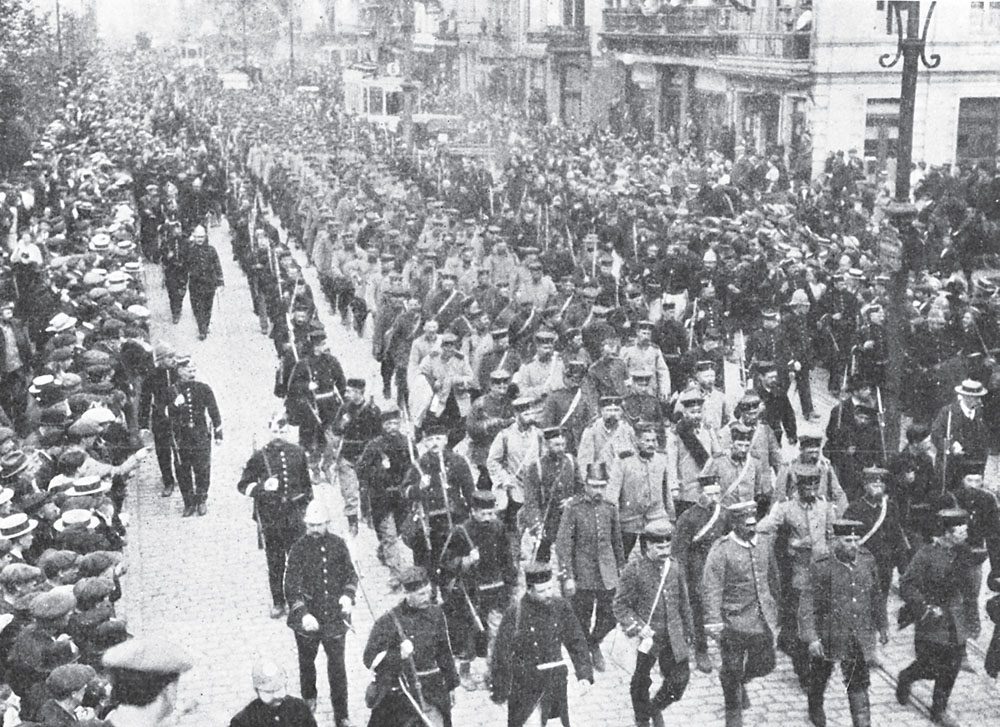
Germans in the heart of Antwerp as prisoners. The Antwerp populace looked on with feelings of gladness mingled with sorrow as this large draft of German prisoners was marched through their city en route for safe keeping in England.
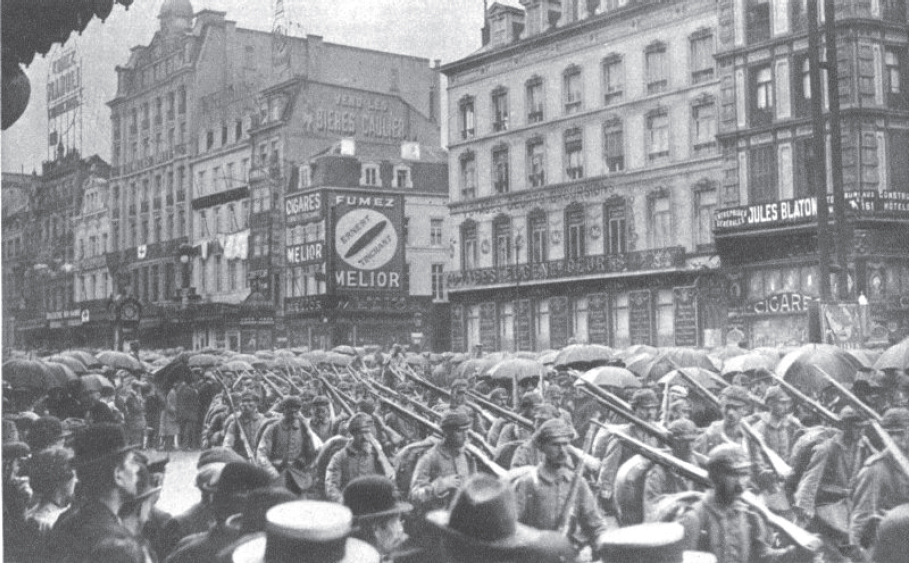
German troops marching through Brussels.
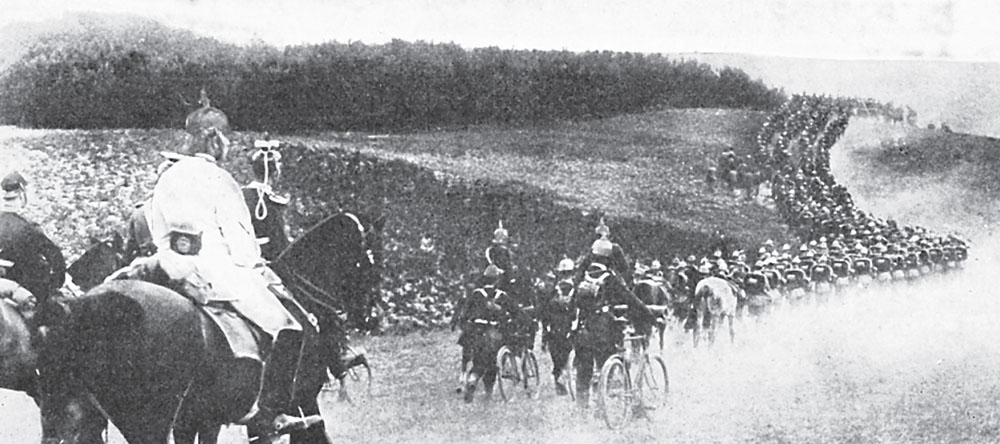
A mixed column of Germans on the march.
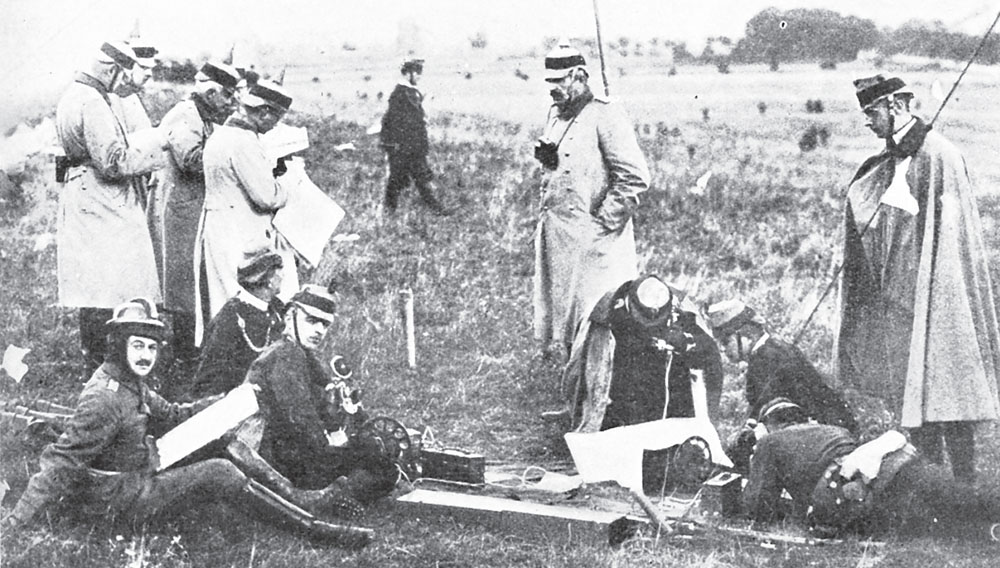
A company of German air scouts receiving telephone instructions from their base. The air scout service, like the armoured motor-car, constituted a new arm of war. Good work was done by the air scouts on both sides of the firing line, but gradually the superior resource and higher initiative of the British air scout established an individual ascendancy over the German air scout. In his despatch of September 1914, Sir John French wrote regarding the British Flying Corps ‘Something in the direction of the mastery of the air has already been established.’ (Original 1914 caption from The War Illustrated).
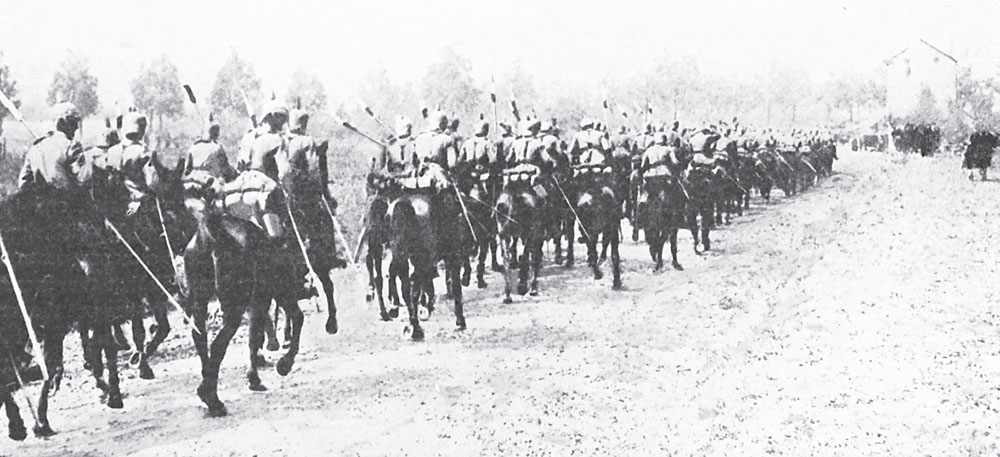
This photograph taken shortly after the outbreak of the war shows German cavalrymen near Vise, on their way to attack that town. In the wayside house two men and a woman were captured and shot as spies.
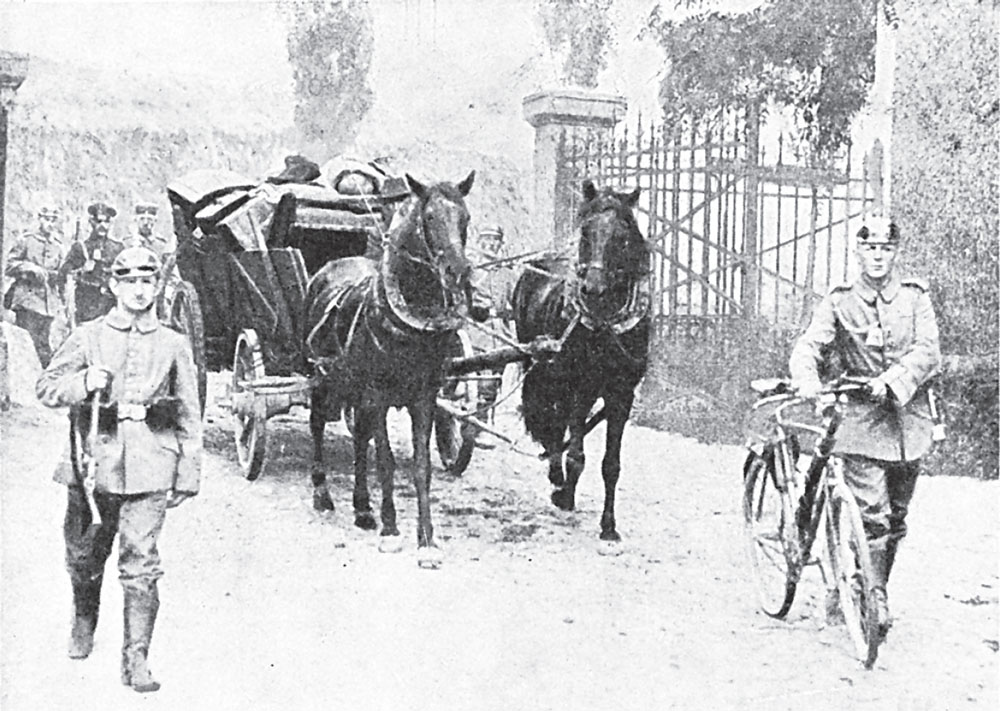
German looters returning to camp. Remorseless in its prosecution of every phase of war by the sternest and most savage measures the German army spared the inhabitants in nothing. Here a party is seen returning from looting a Belgian farmstead. (Original 1914 caption from The War Illustrated).
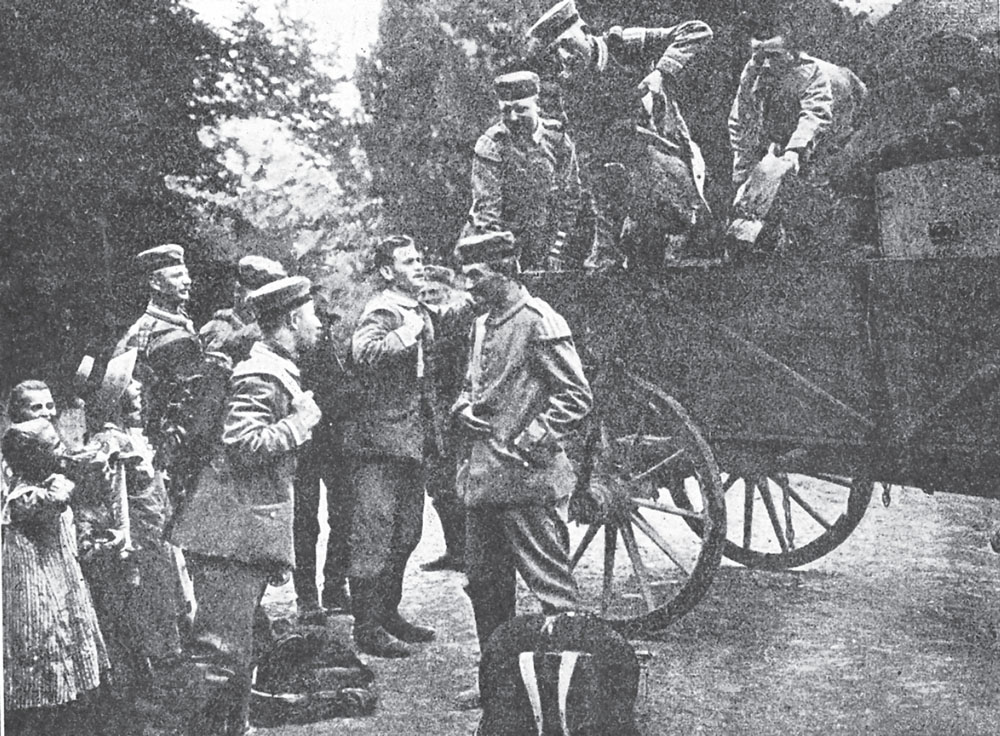
Where innocence is bliss. German troops unloading baggage and ammunition. To the juvenile spectators war is merely an amusing entertainment.
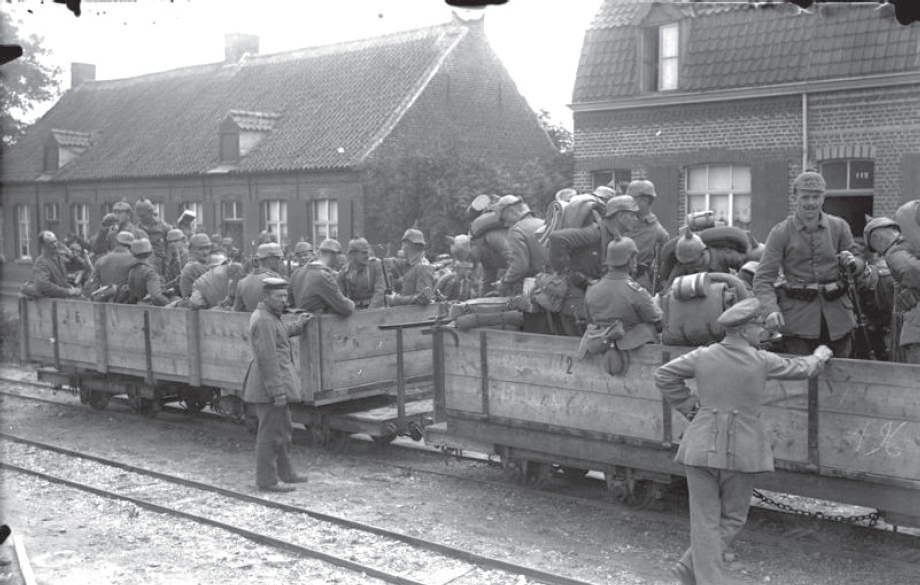
The last stage in the journey to the front is undertaken by narrow gauge railway.
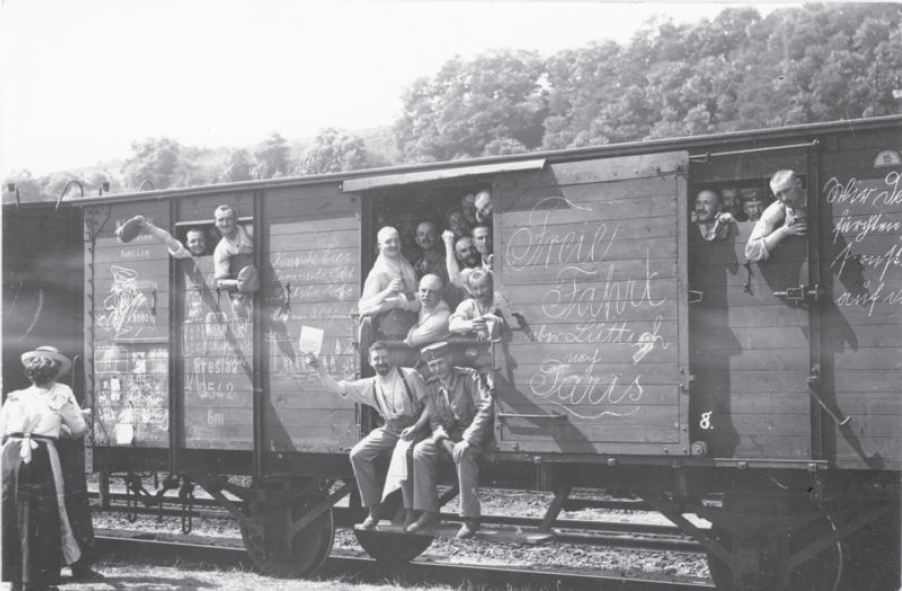
Cattle trucks were utilized for longer journeys and were usually adorned by all manner of jingoistic slogans.
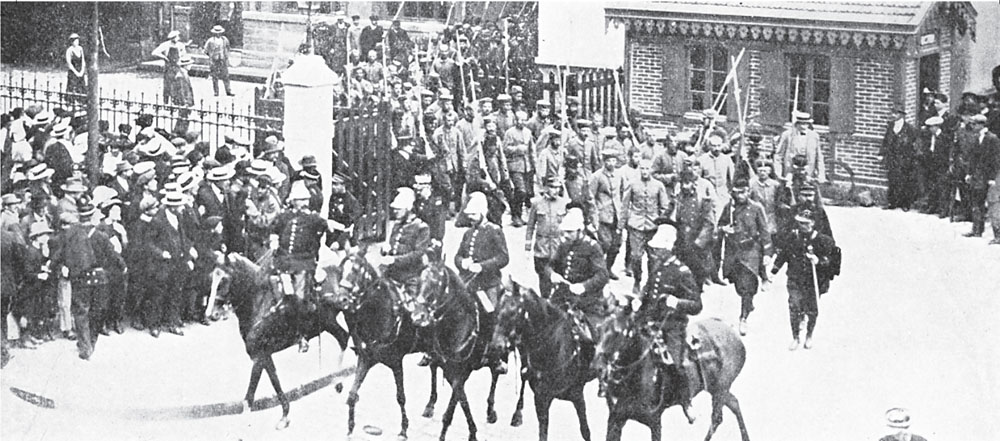
German prisoners under guard are marched into captivity.
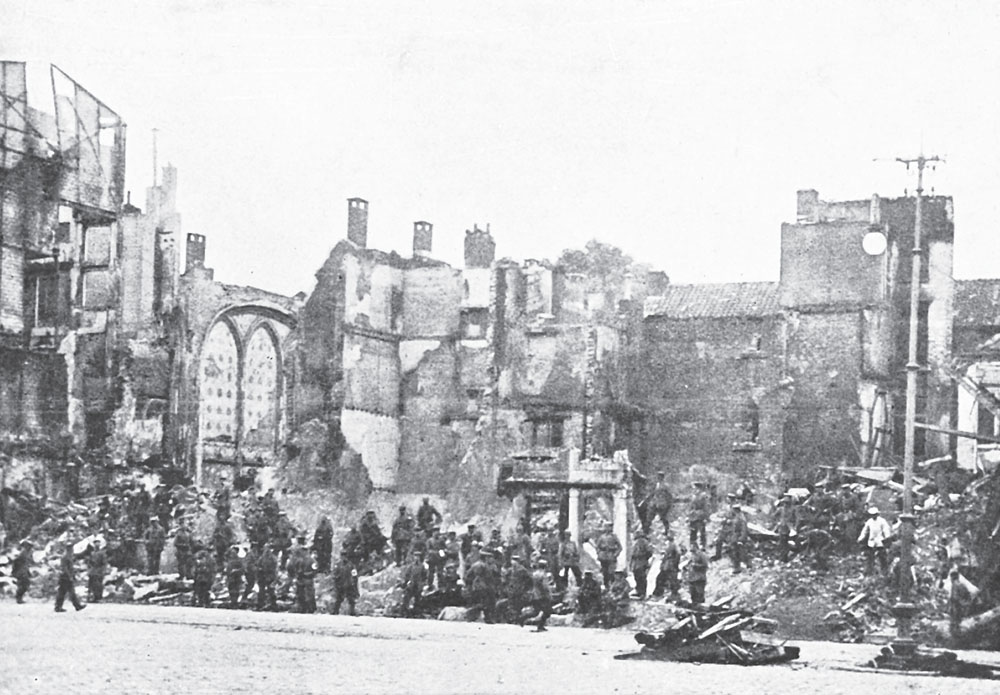
German troops in the desolated streets of Liege.
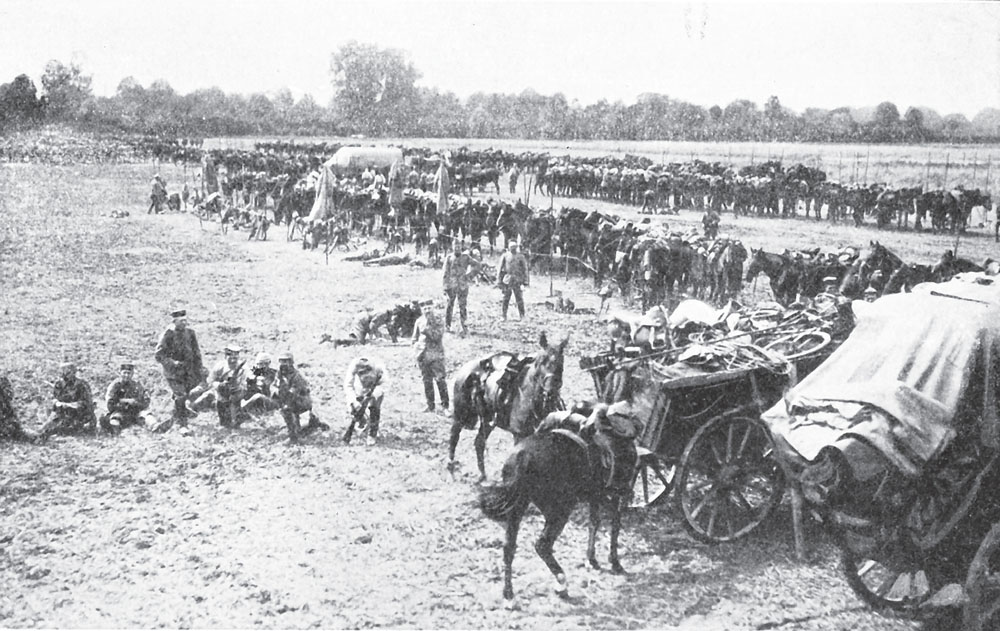
German cavalry camp by the German frontier.
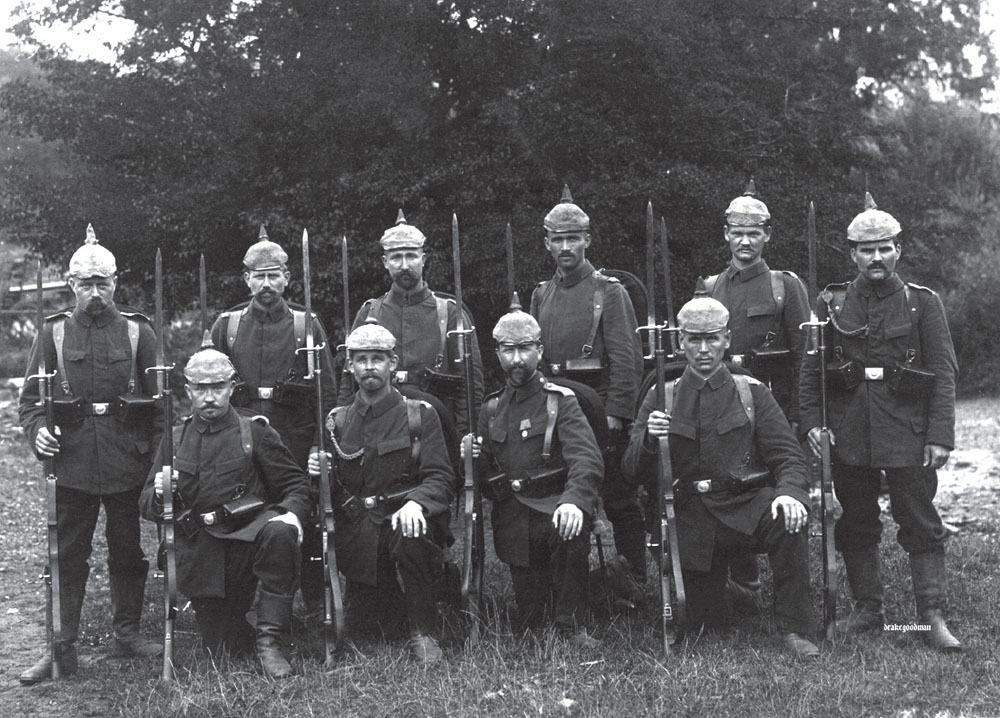
Early war German infantry from an unidentified unit. It is unusual for there to be no distinguishing number on the helmet covers.
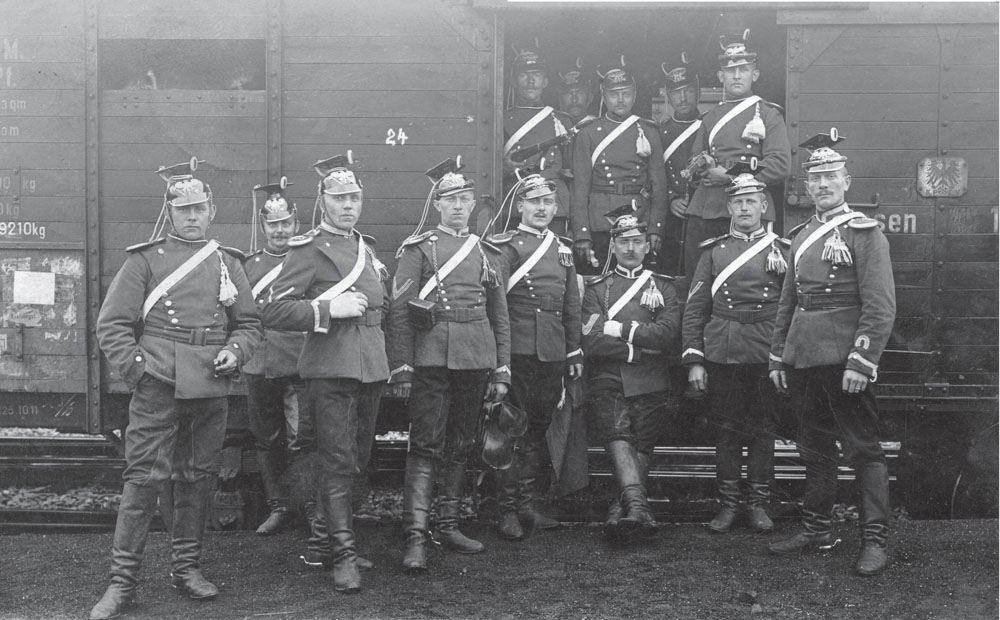
Men of the XVth regiment of Uhlans from Schleswig Holstein pose for the camera in Sarrebourg during early August 1914.
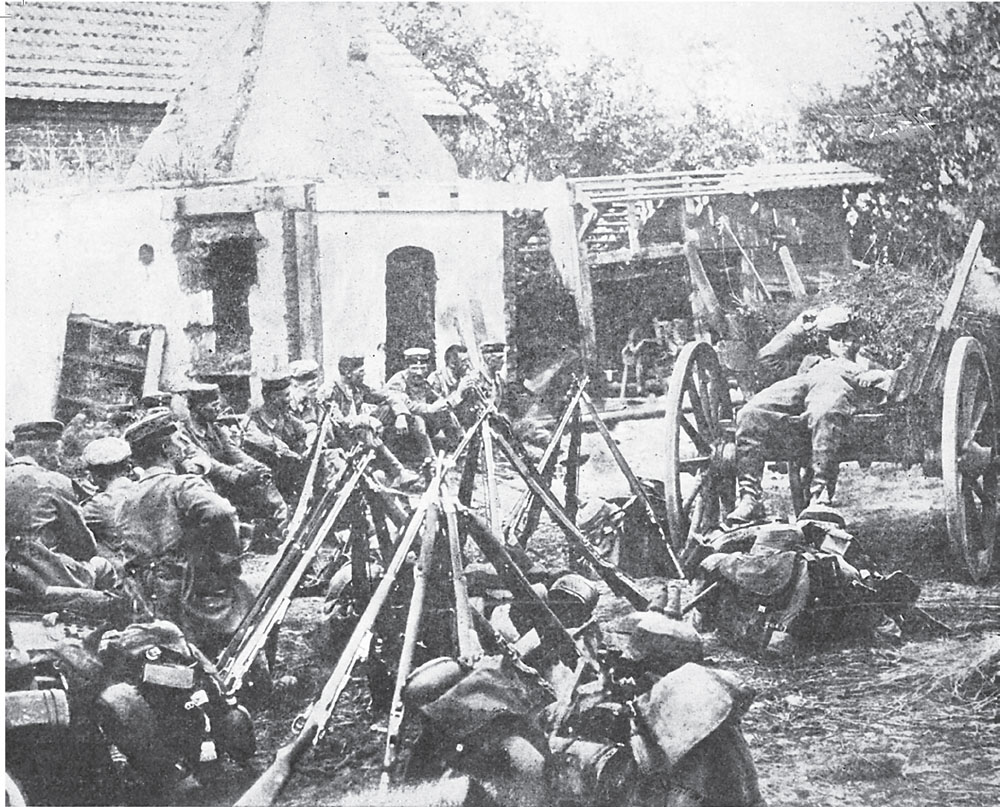
German infantry resting in a Belgian farmhouse they have destroyed.
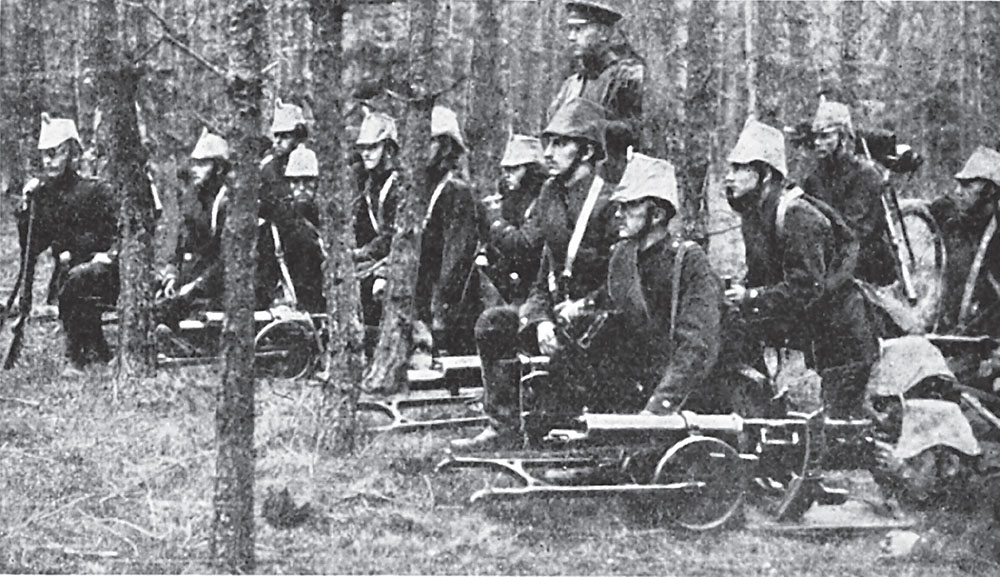
German machine gun company in a Belgian wood. The men are wearing the 1886 pattern shako which was surprisingly common among Imperial Army units particularly the Landwehr.
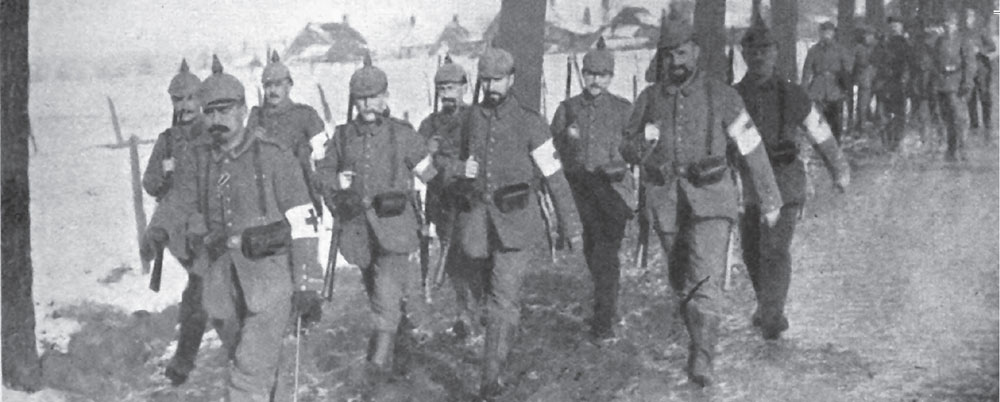
This photograph of German troops wearing Red Cross arm bands but with shouldered rifles and advancing at the march proved to be a propaganda coup for the British.
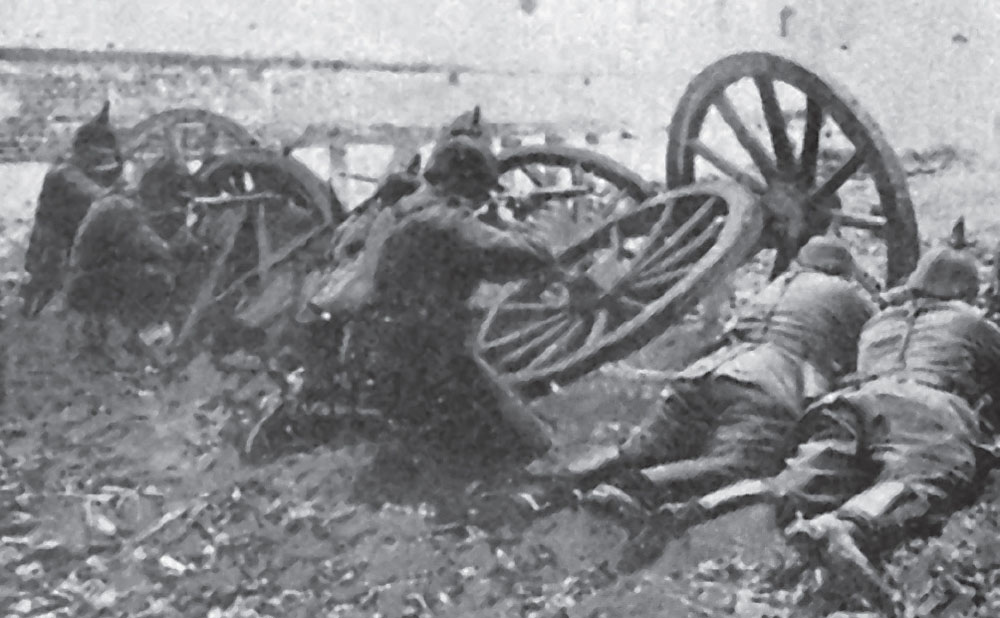
A rare shot of German troops in action. A hastily erected barricade has been thrown up to protect against a British advance.
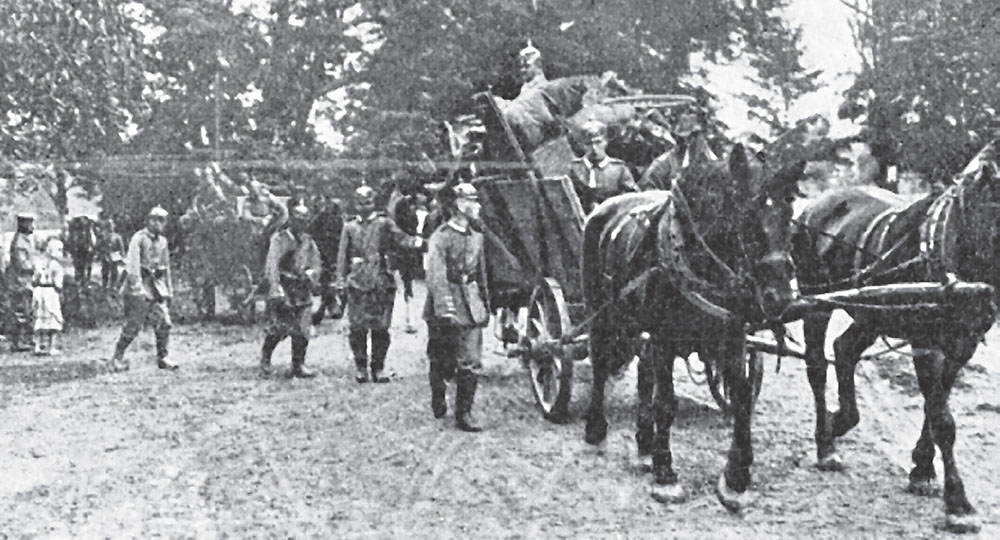
German supplies on their way through Belgium to France.
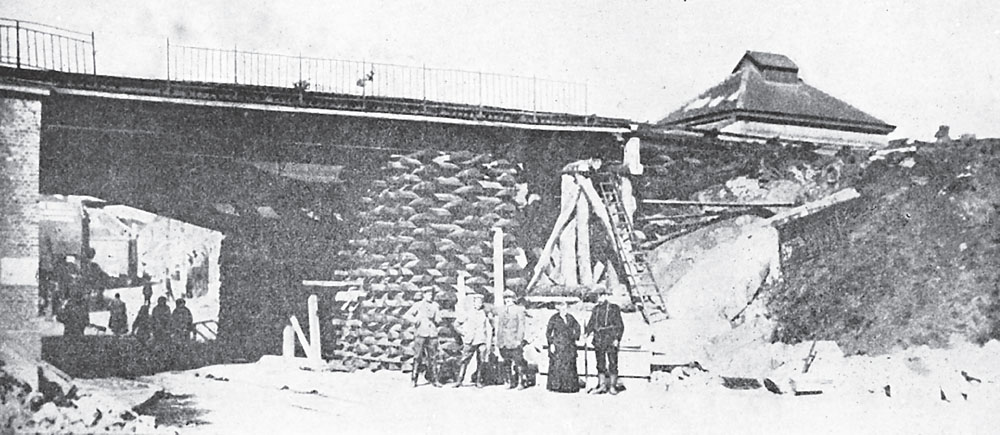
The clever repair, by German engineers, of a railway bridge at Tongres.
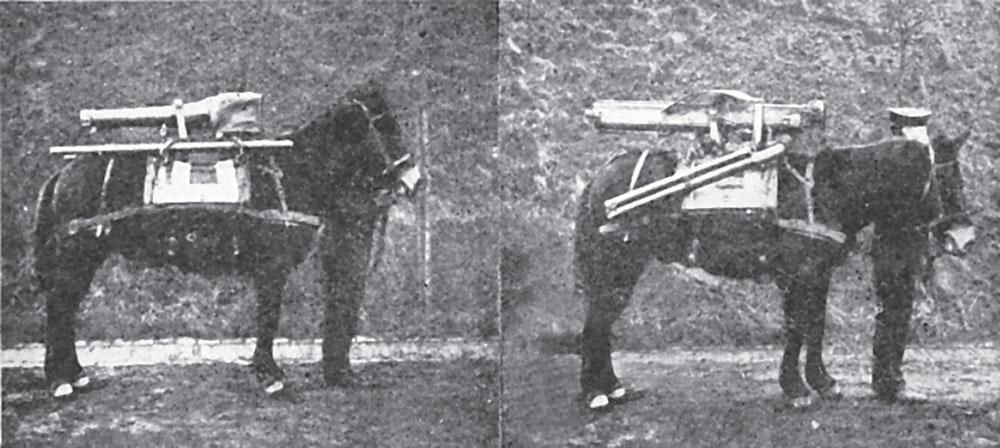
The Krupp light artillery piece which could be broken down into two mule loads.
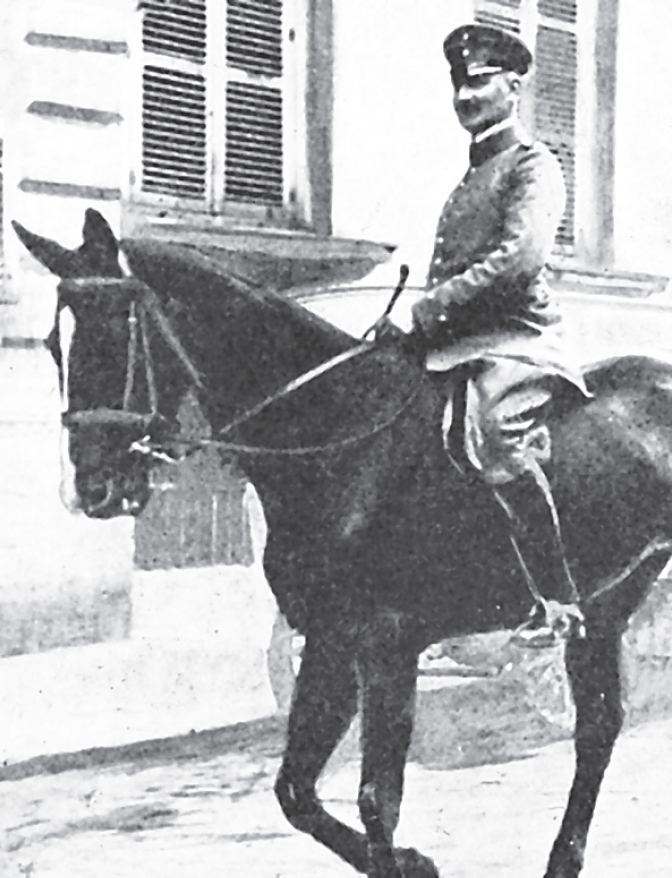
The German military commandant of Brussels.
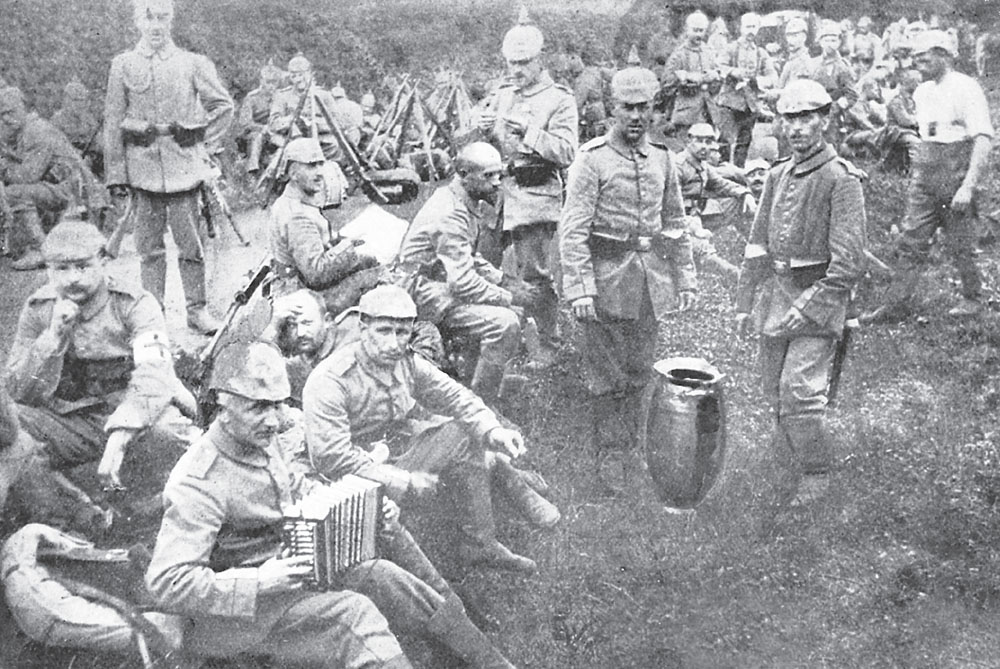
German infantry during the advance into Belgium.
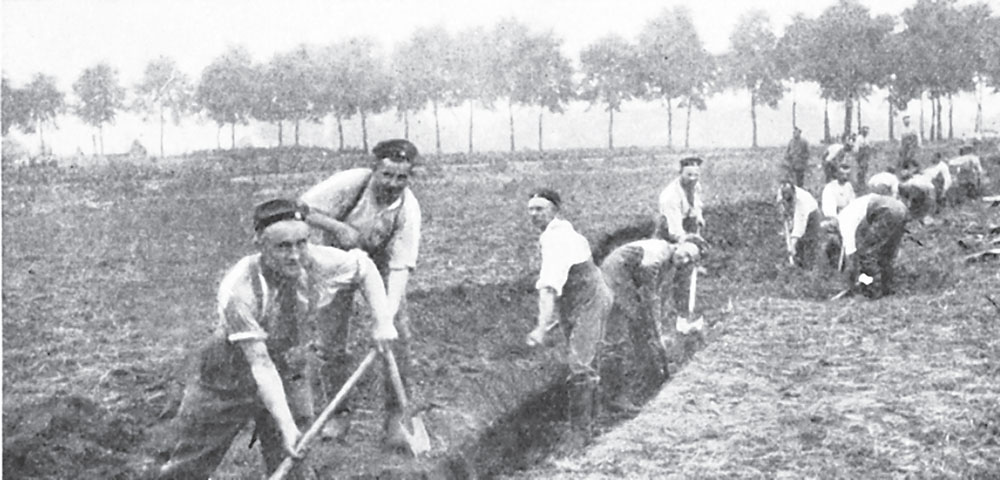
German soldiers performing the spade work which was to become a dreary feature of almost every soldier’s life.
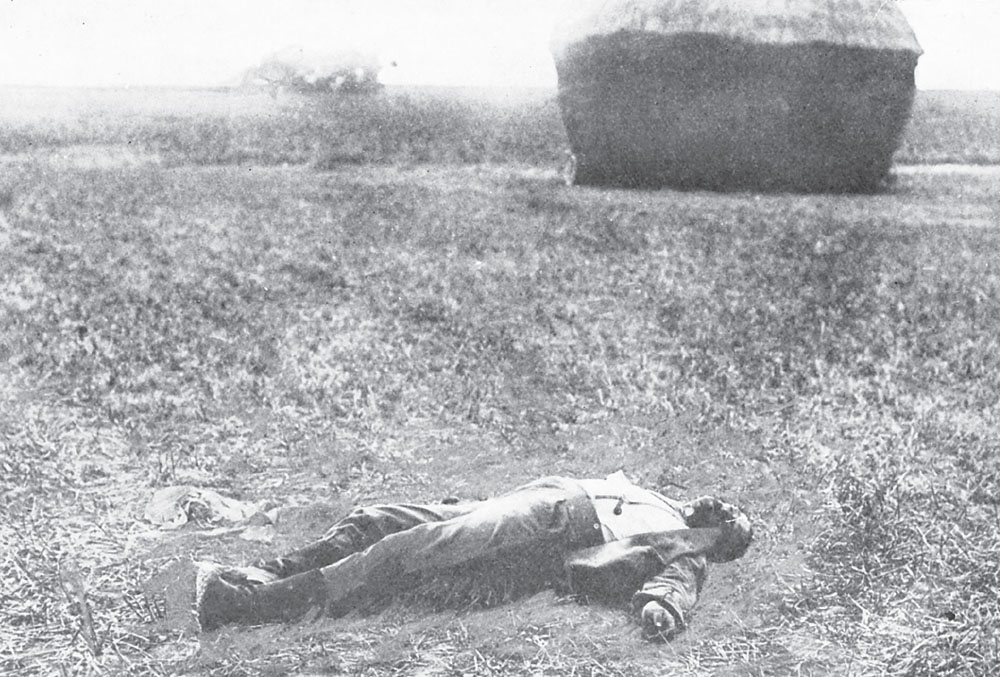
A German soldier lies dead in an unidentified field in Belgium, August 1914.
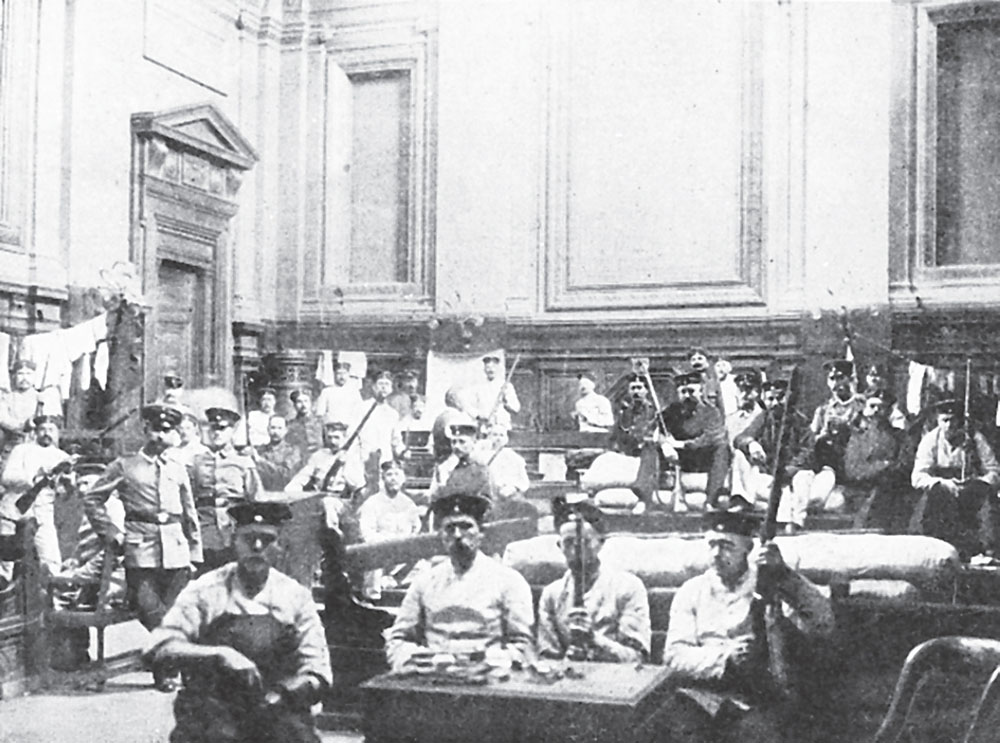
German soldiers occupy the Brussels Palais de justice.
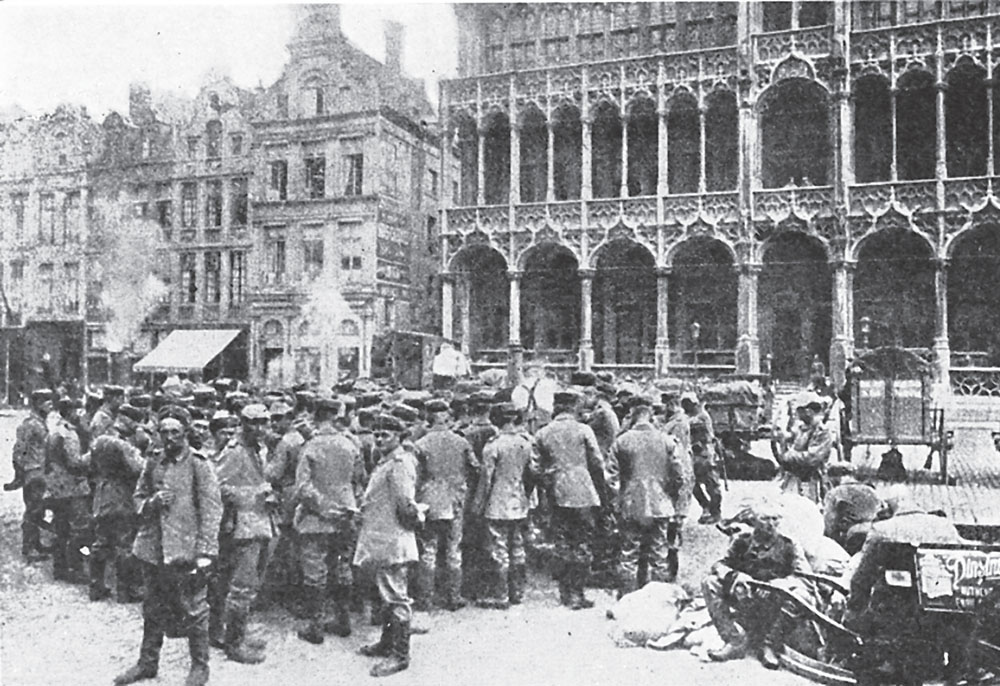
German infantry in the Grande Place, Brussels.
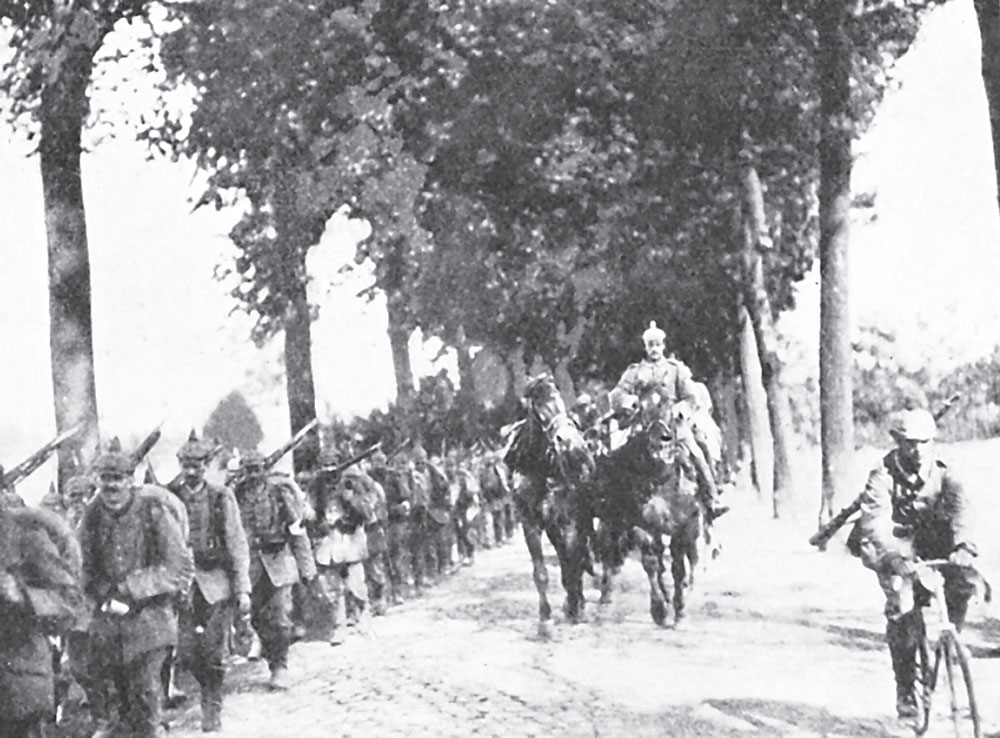
German infantry on the march.
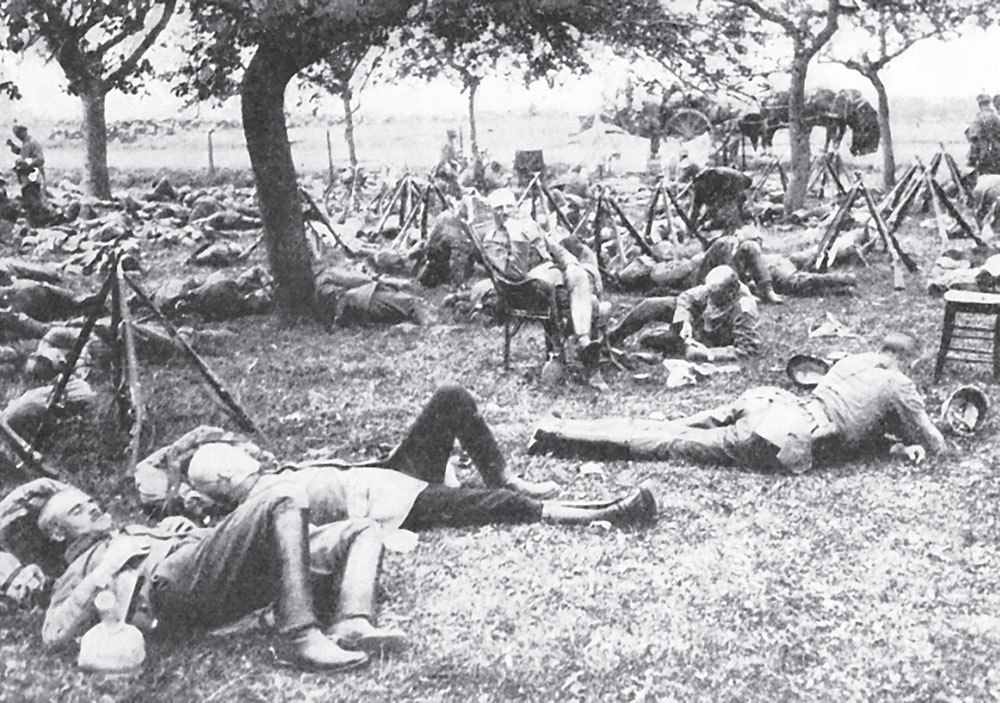
German outpost with soldiers awaiting a Belgian attack.
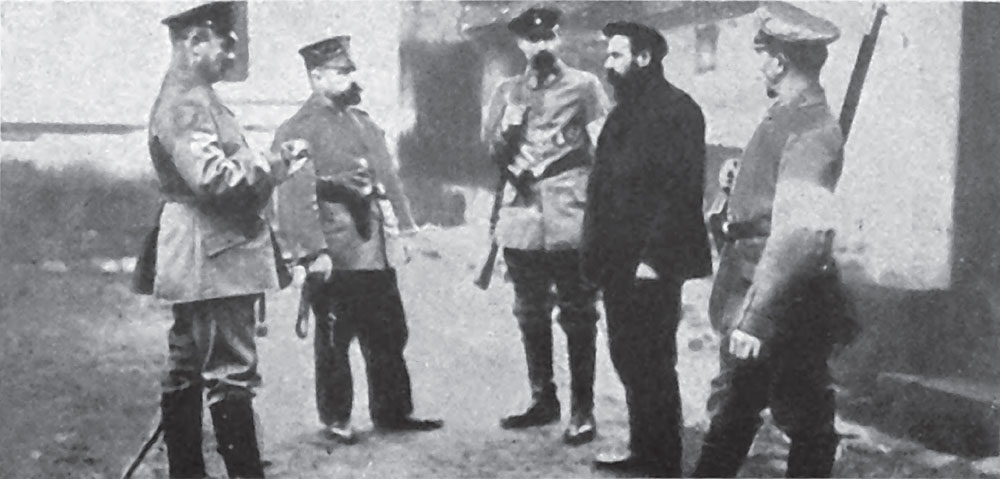
A Belgian peasant is interrogated by German officers.
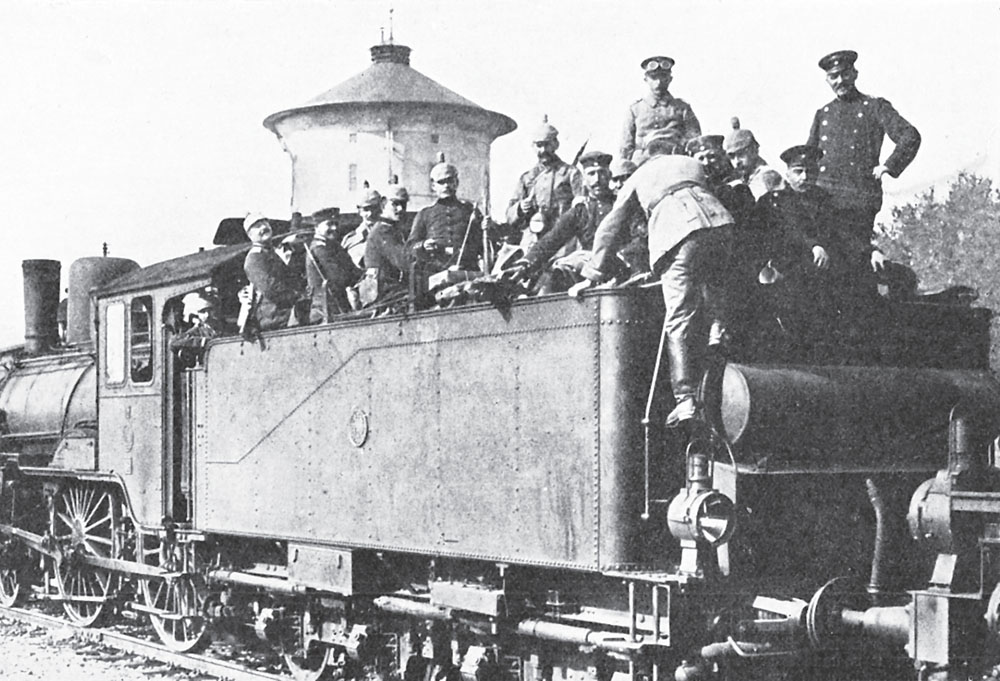
German infantry on a train to the frontier. The railway network played a vital role in the planning which led up to the Great War.
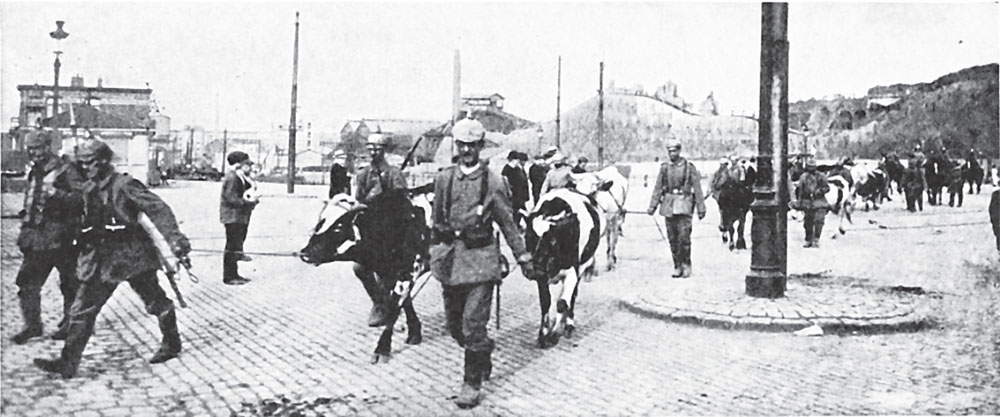
Confiscating Belgian cattle to feed the German garrison of Brussels.
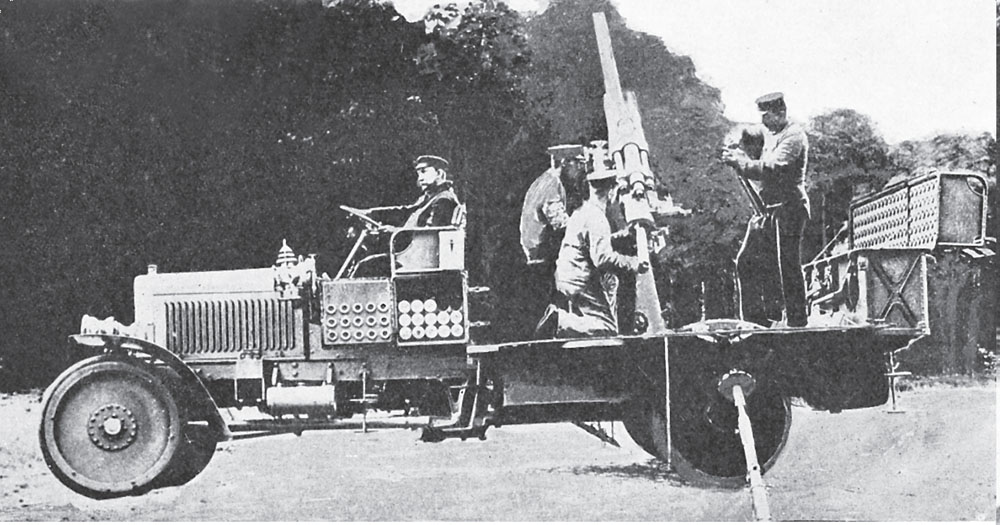
A motorized German anti-aircraft gun. These guns were designed to fire at a high angle in order to attack aircraft.
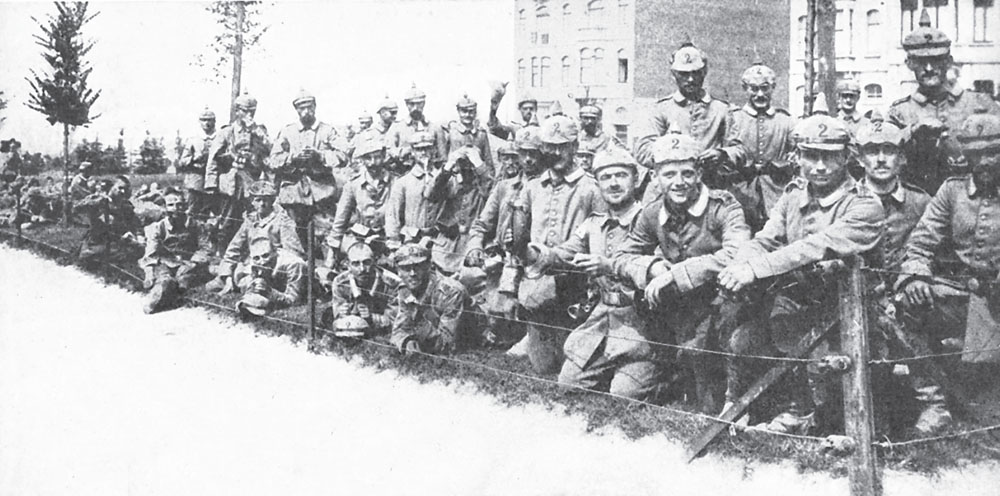
Men of the 2nd regiment of the German Imperial Guards in Brussels.
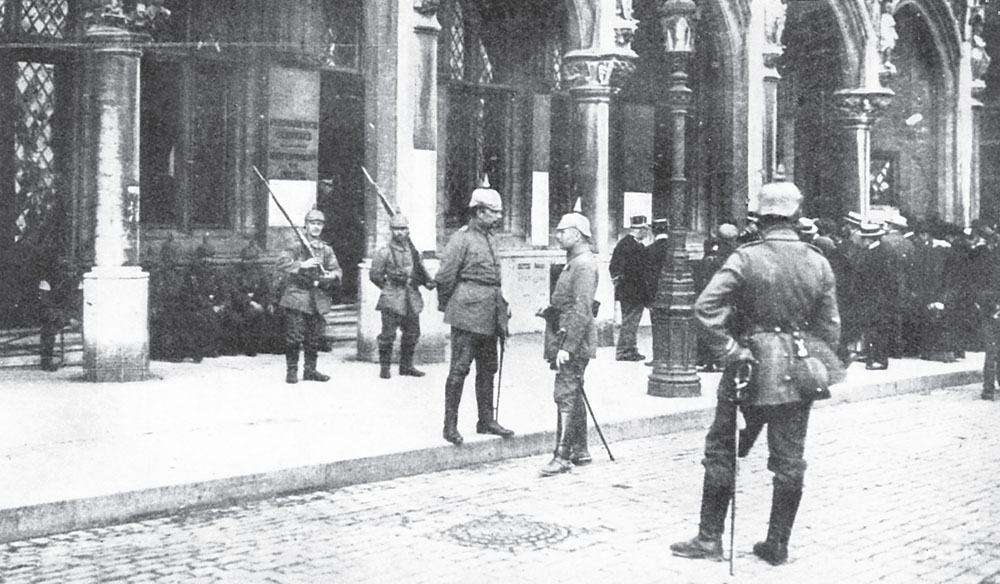
Officers of the German Imperial Guards in Brussels.
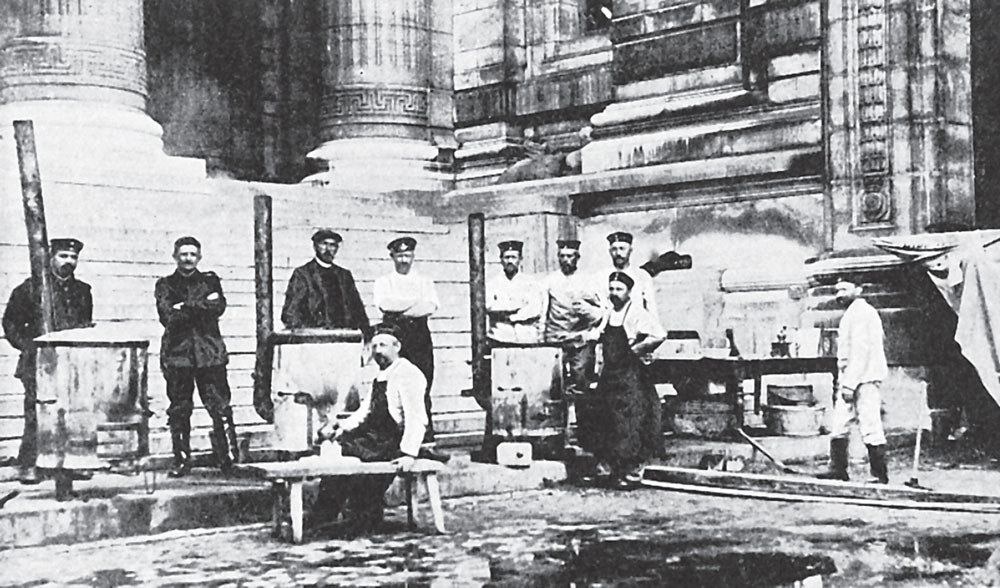
The German field kitchen on the steps of the Palais de justice, Brussels.
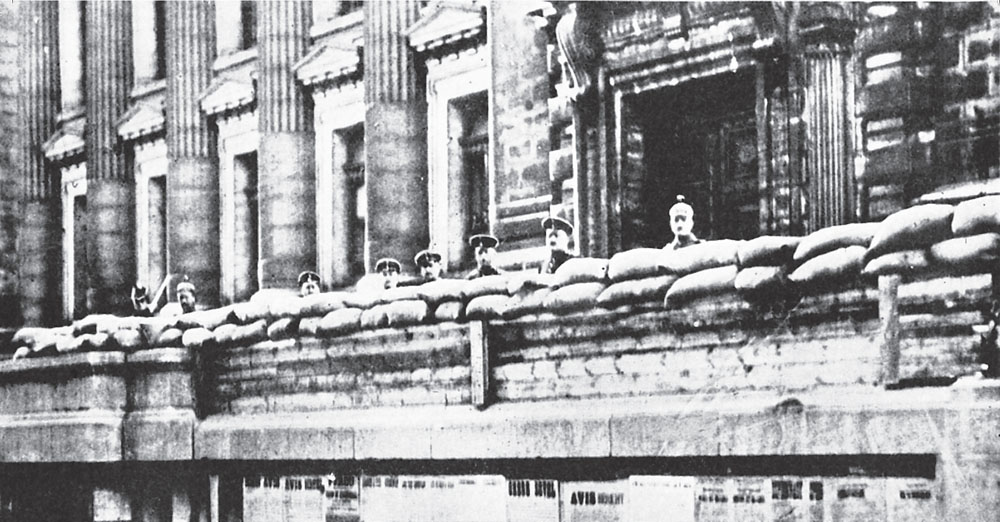
Soldiers of the German Imperial Army in Brussels, 1914.
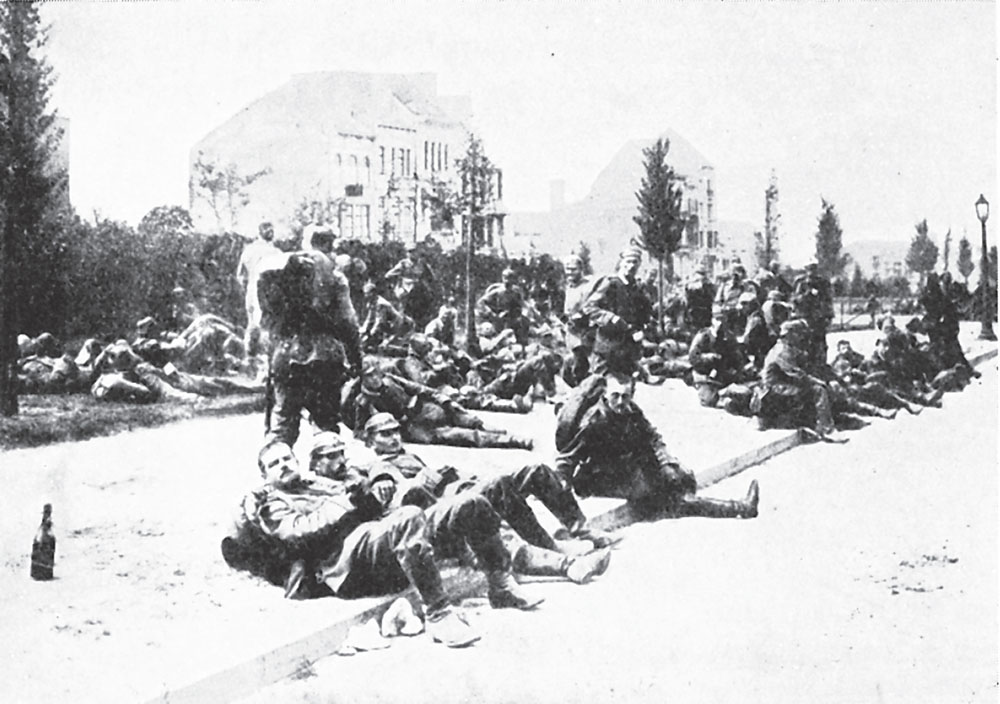
German troops weary from marching in a Brussels suburb.
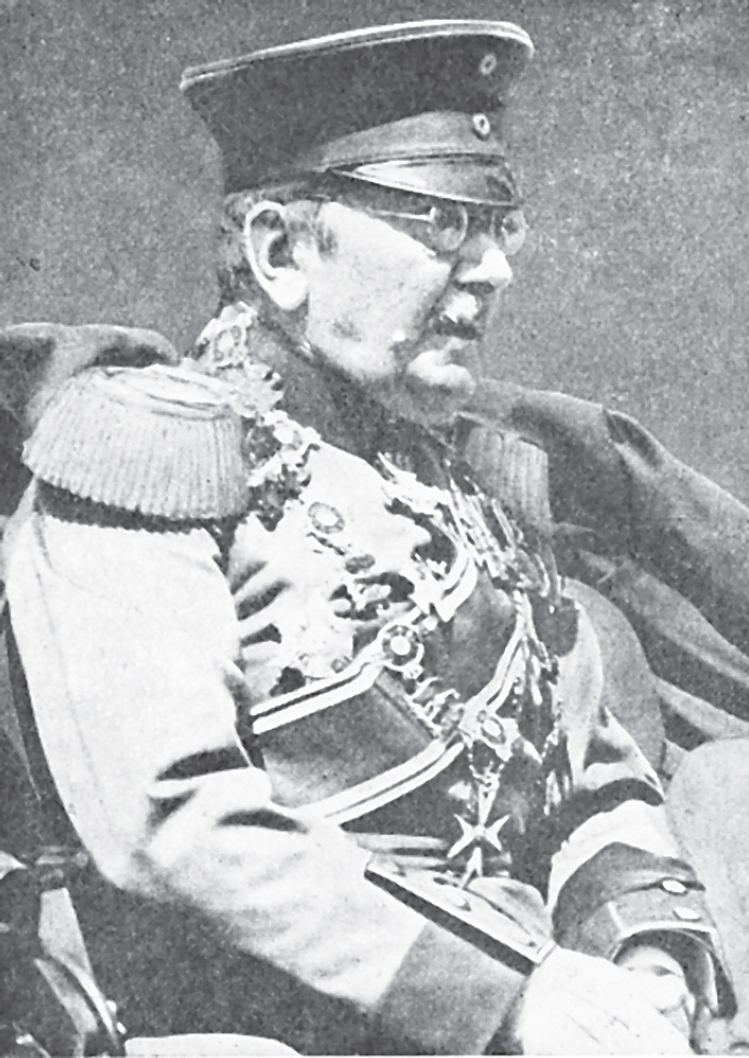
Field Marshal Von Der Goltz.
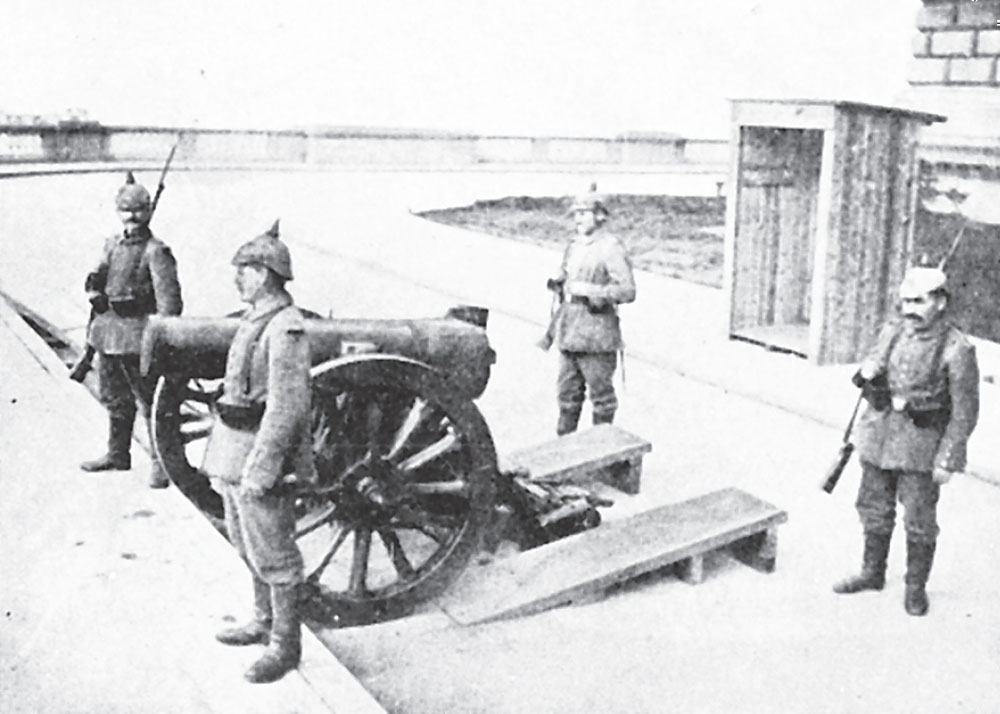
A German gun and guards near the Palais de justice, Brussels.
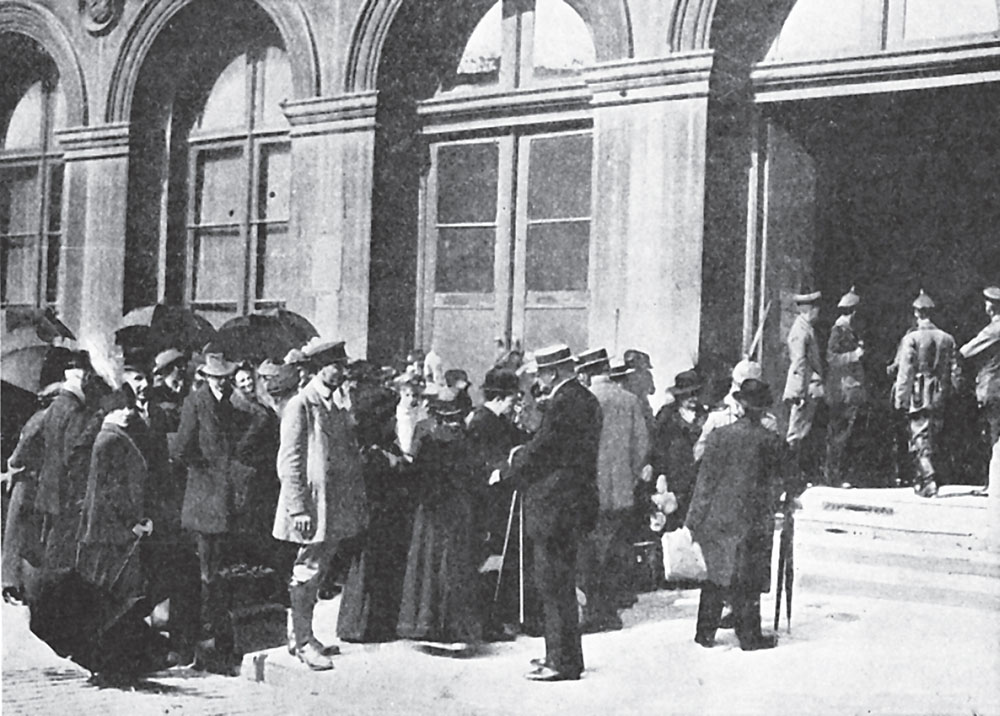
The stream of fugitives from Belgium must await processing by the German authorities.
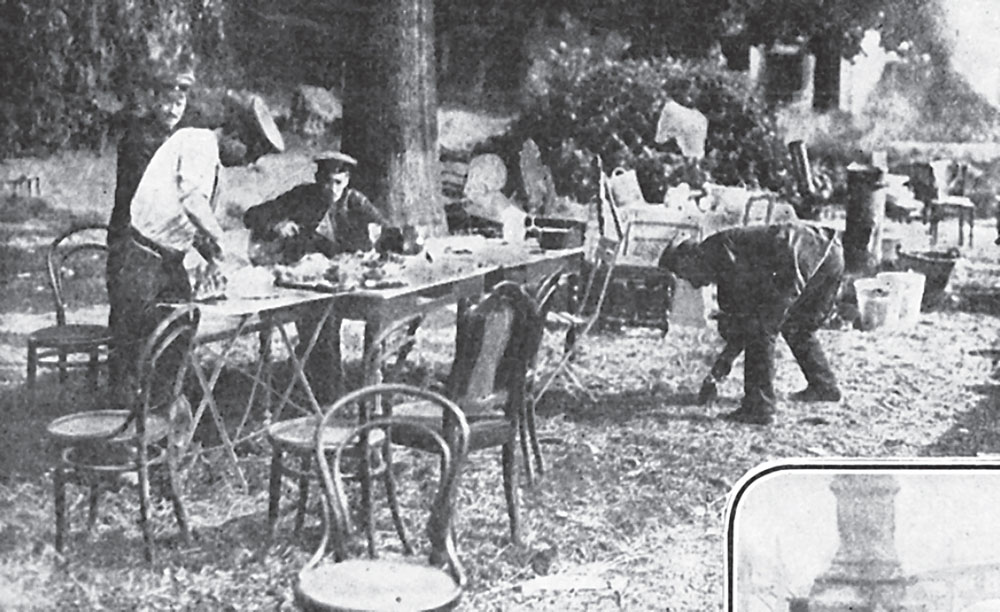
Field kitchen in the murdered Burgomasters garden.
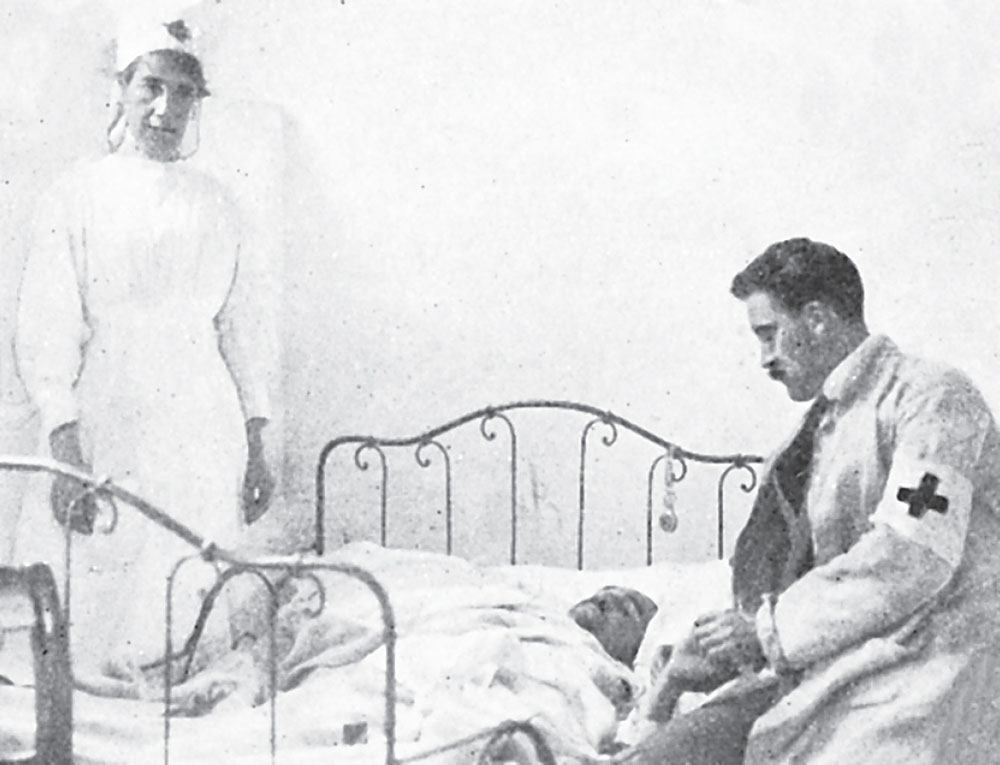
A wounded soldier being cared for by the Belgian Red Cross.
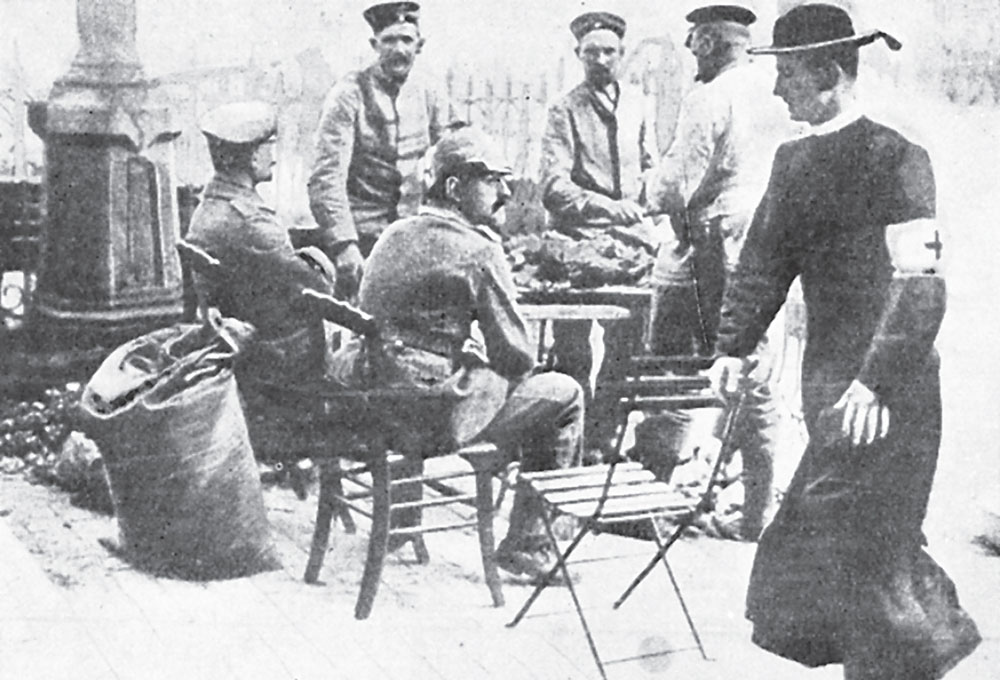
Germans lording it in Belgium.
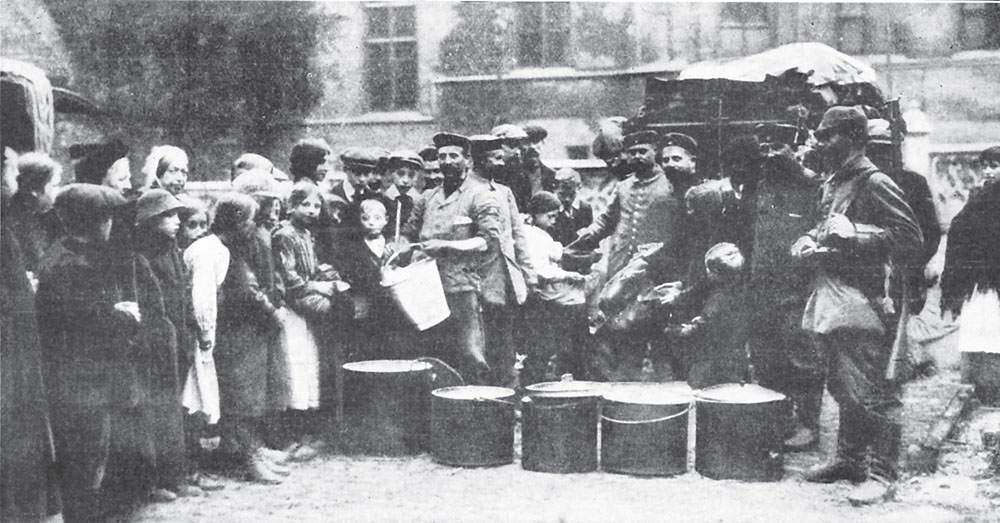
German invaders doling out a little food to the poor of Bruges.
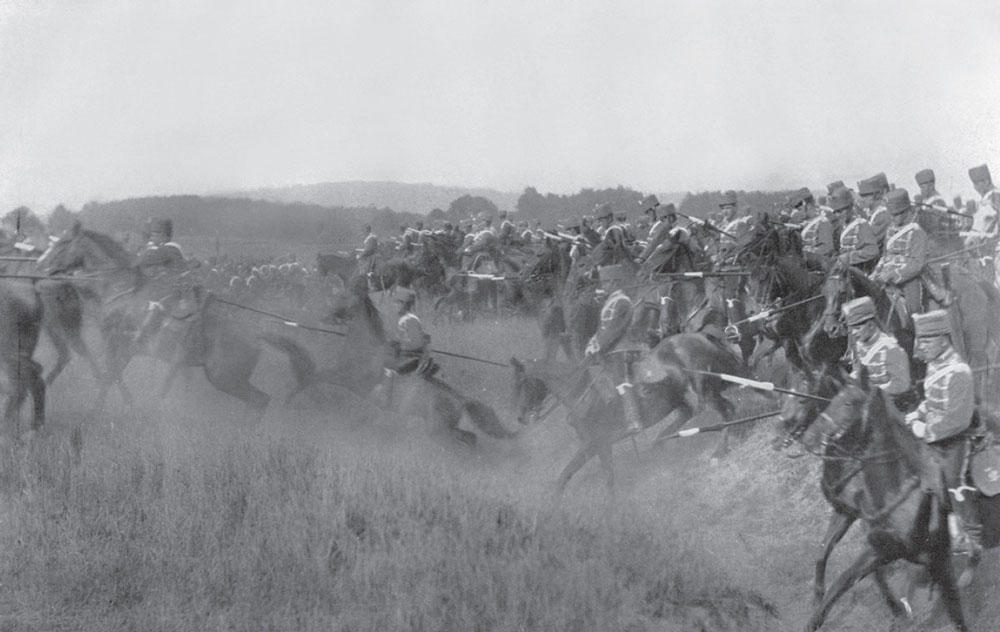
German Hussars on the attack. The light cavalry provided a screen for the advancing armies.